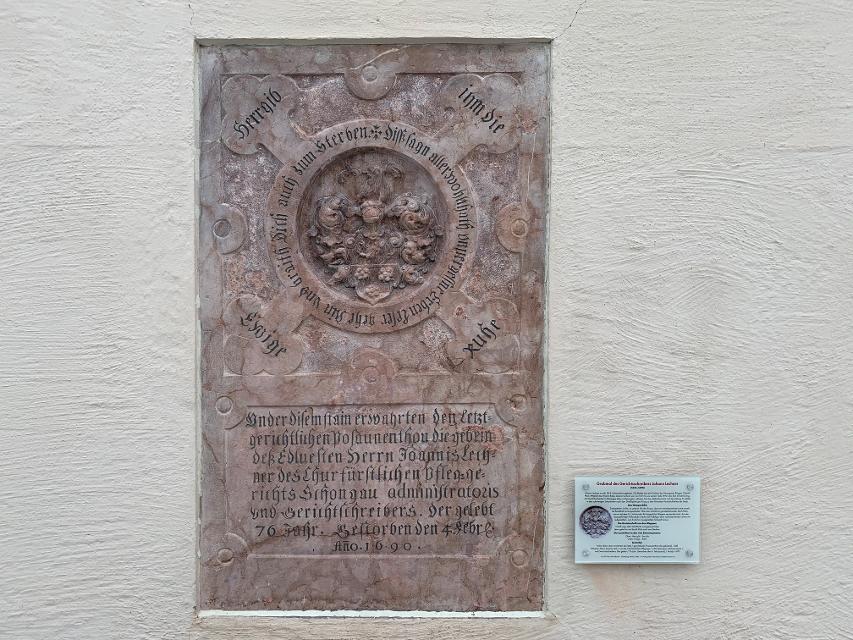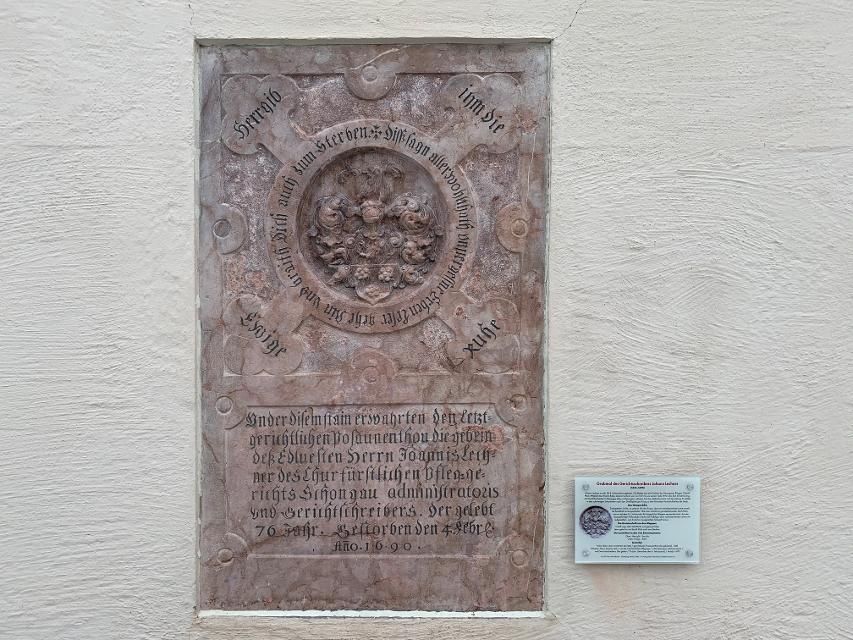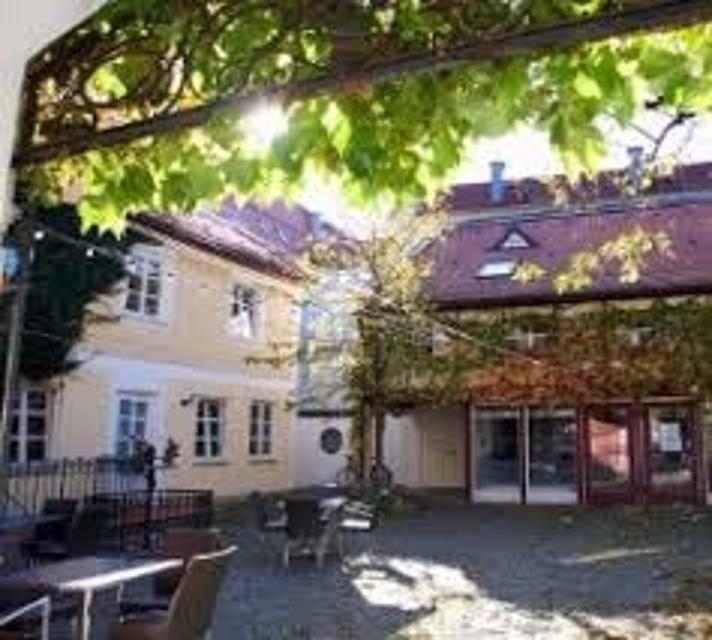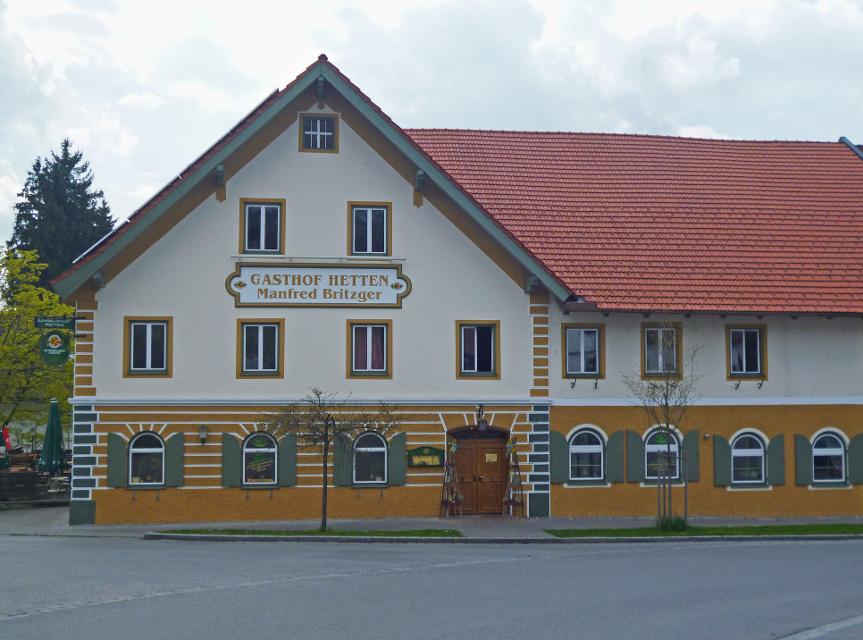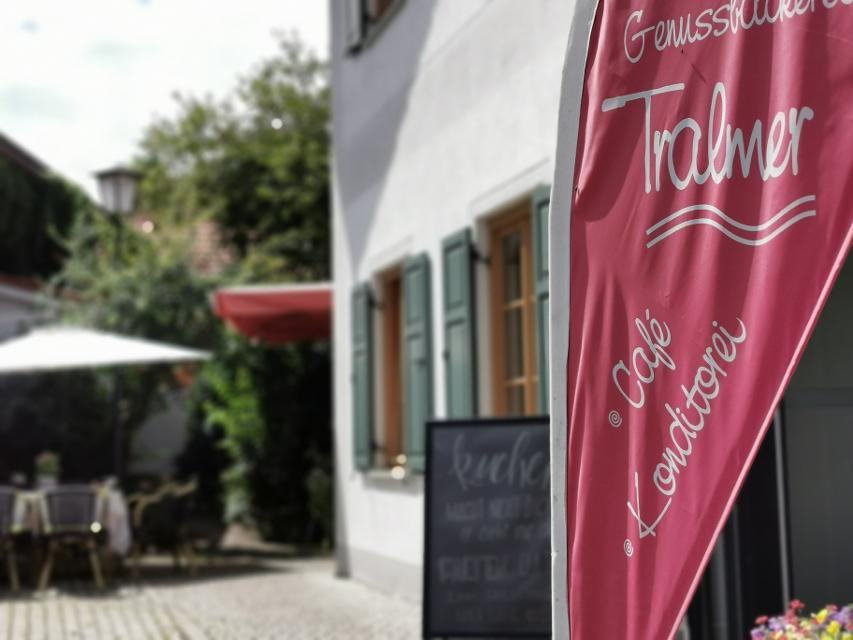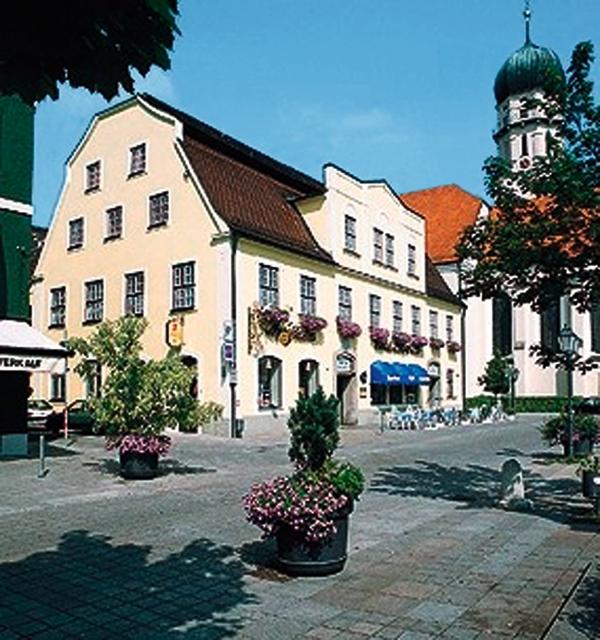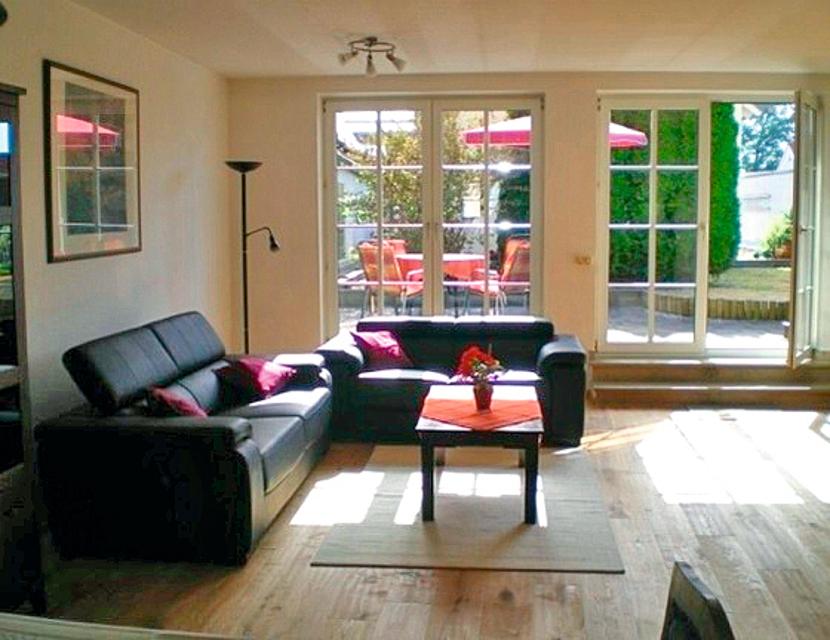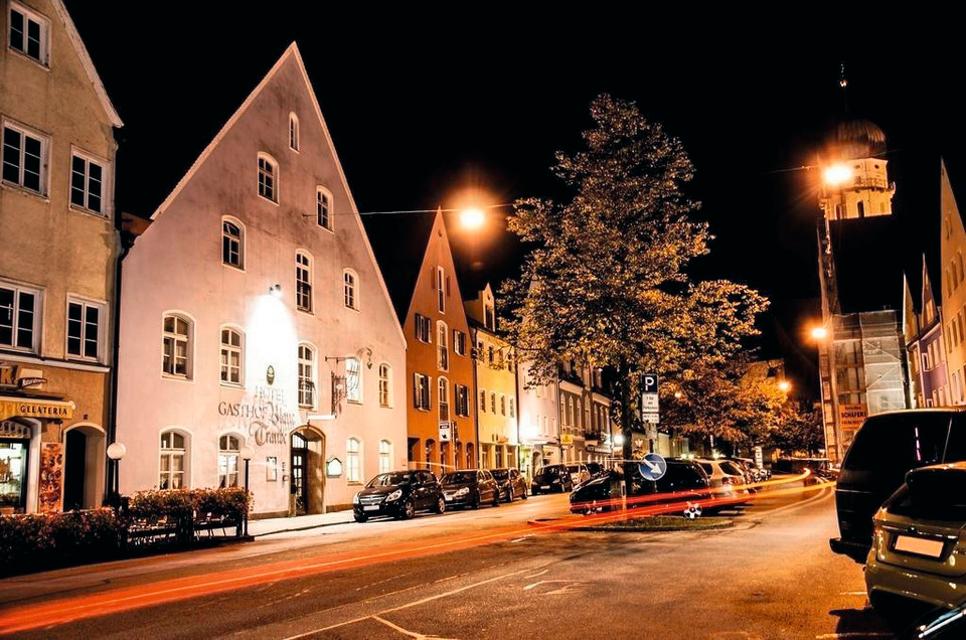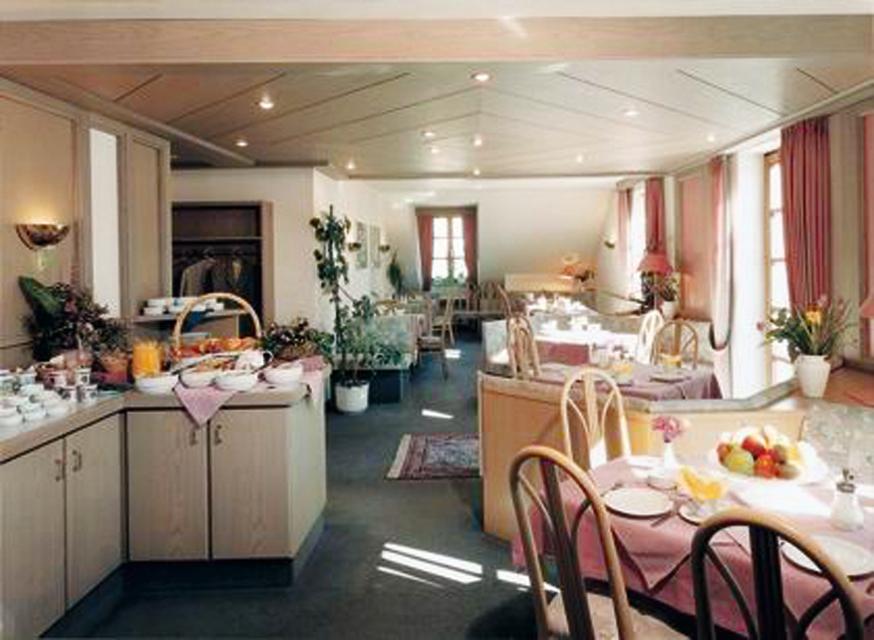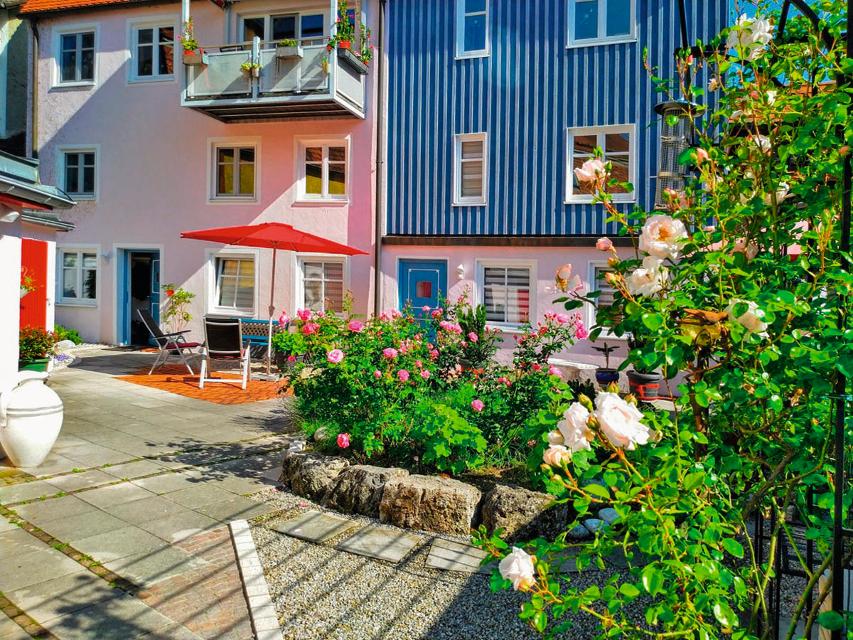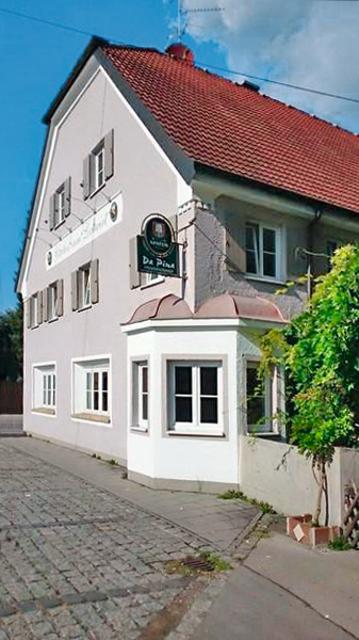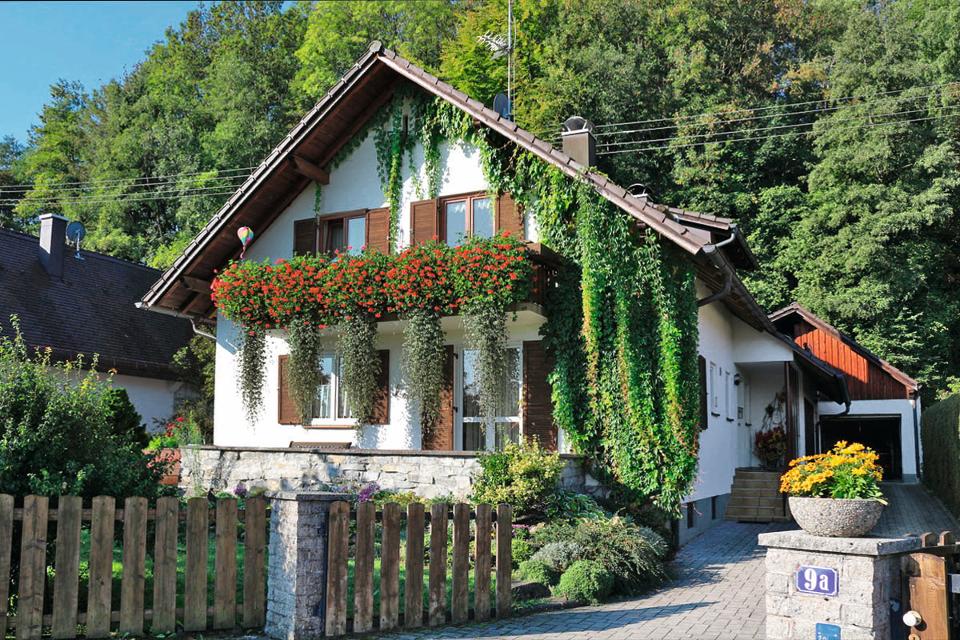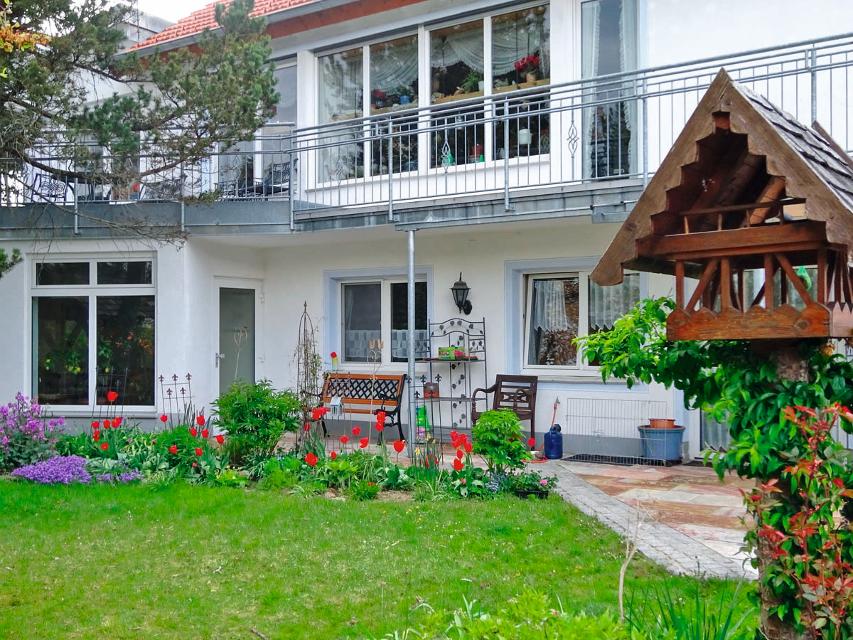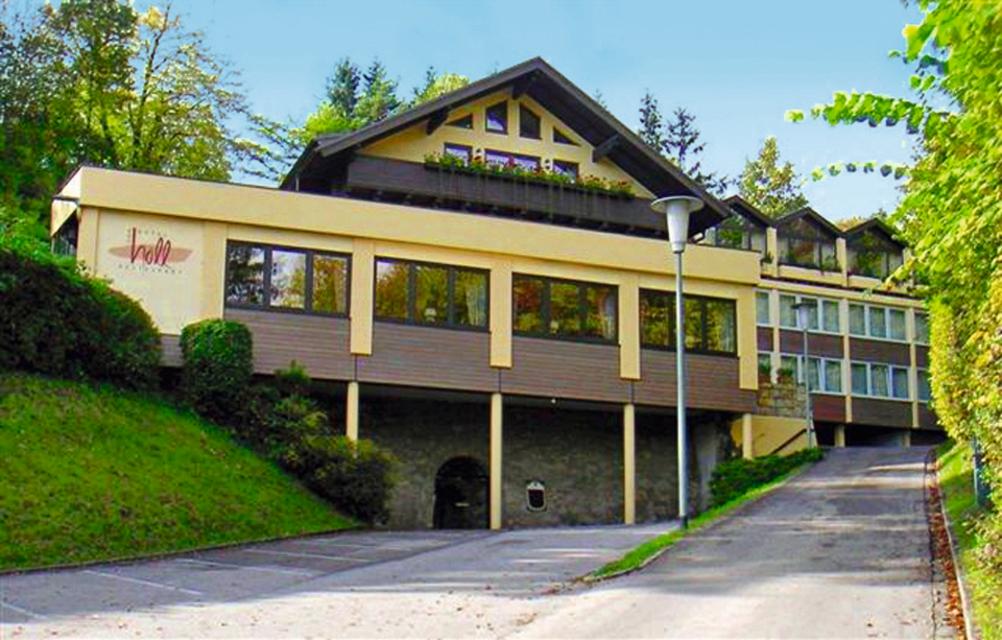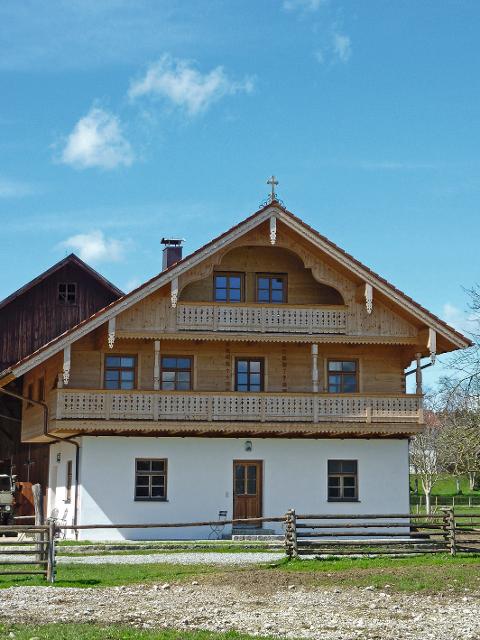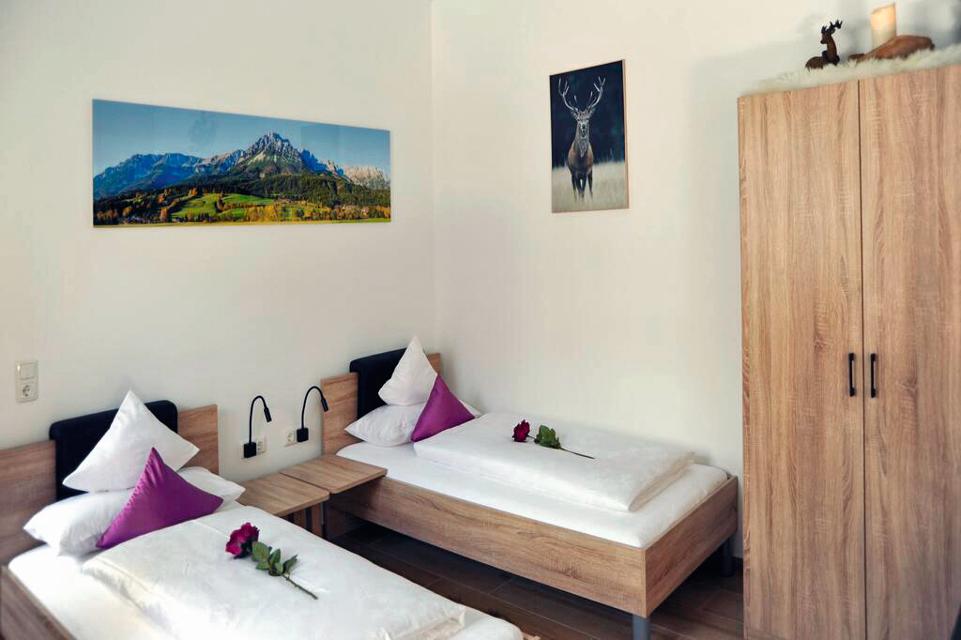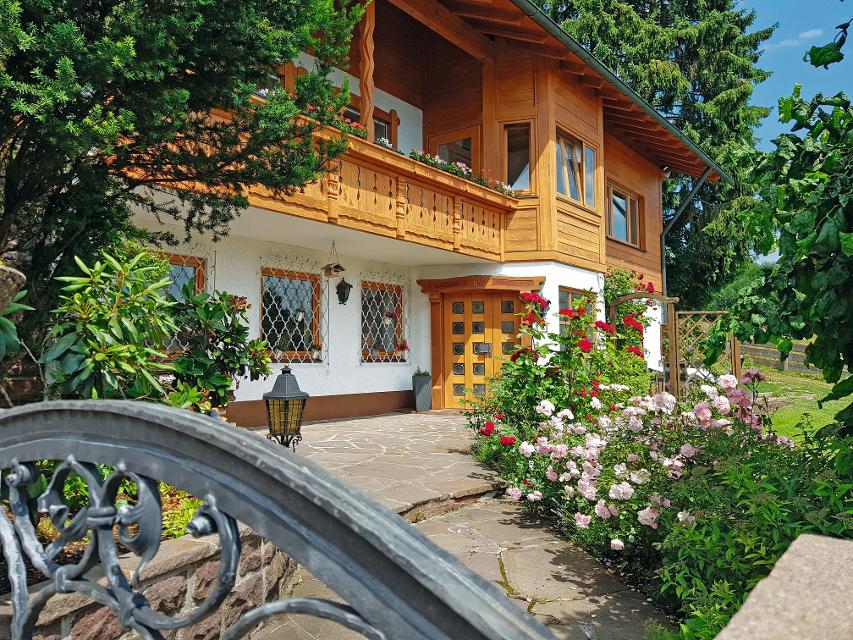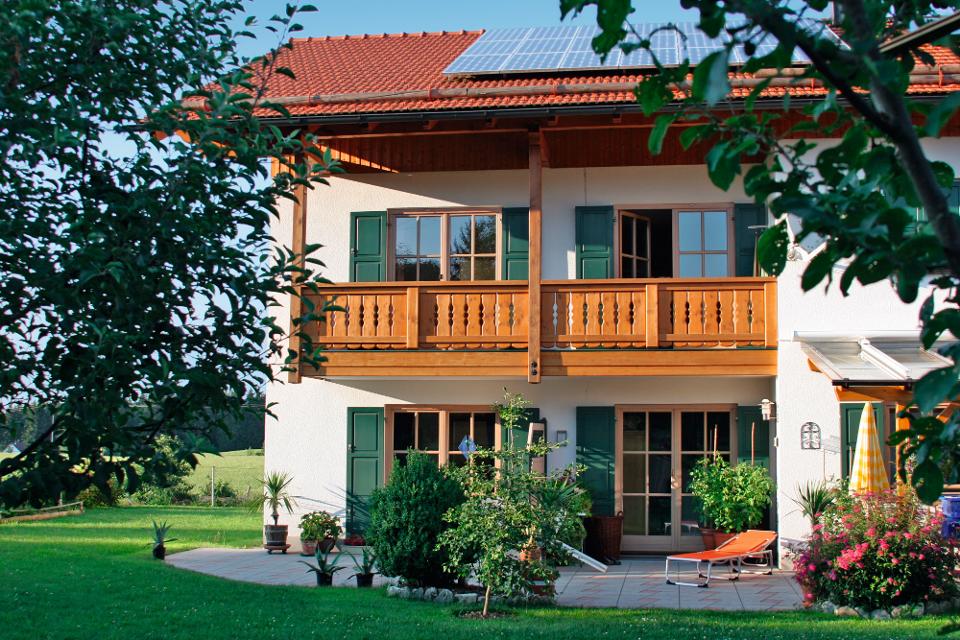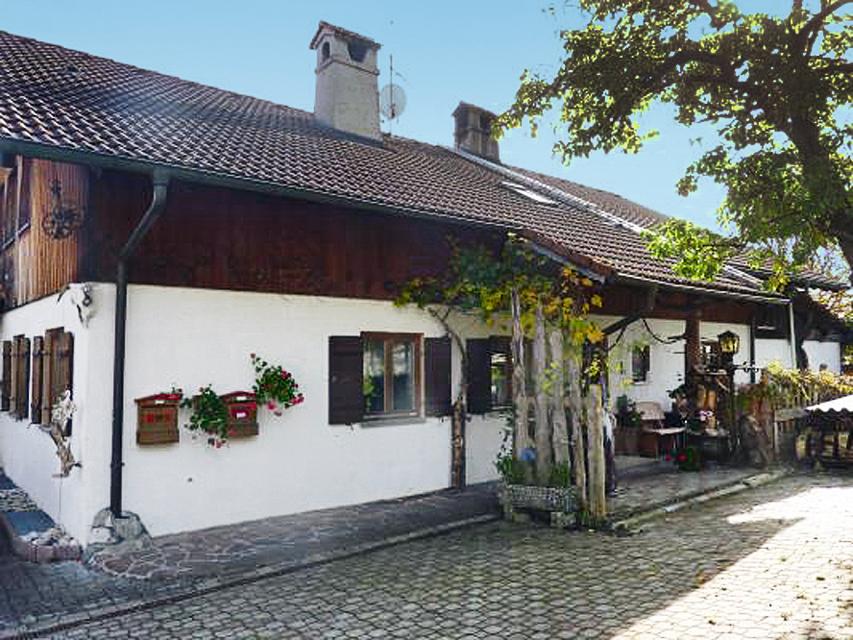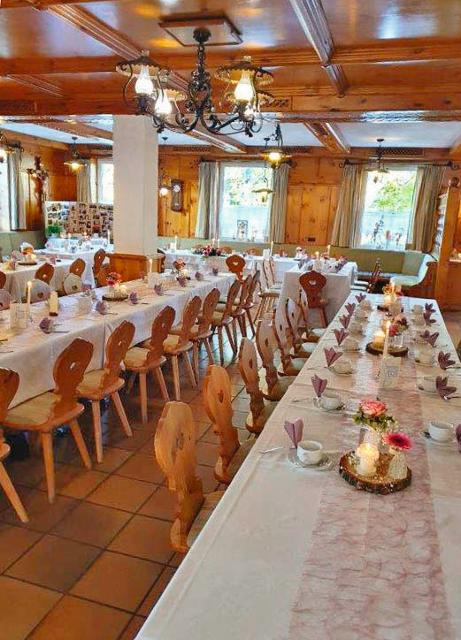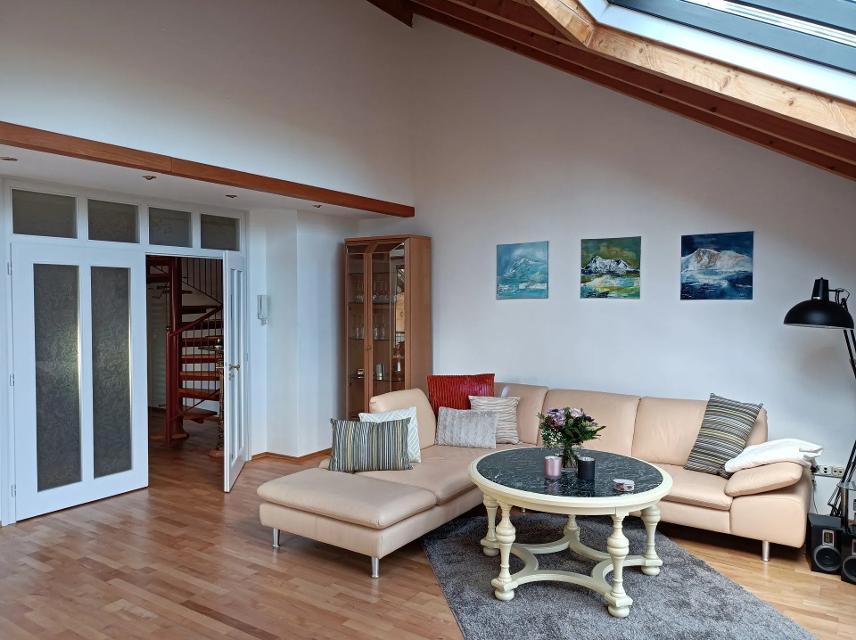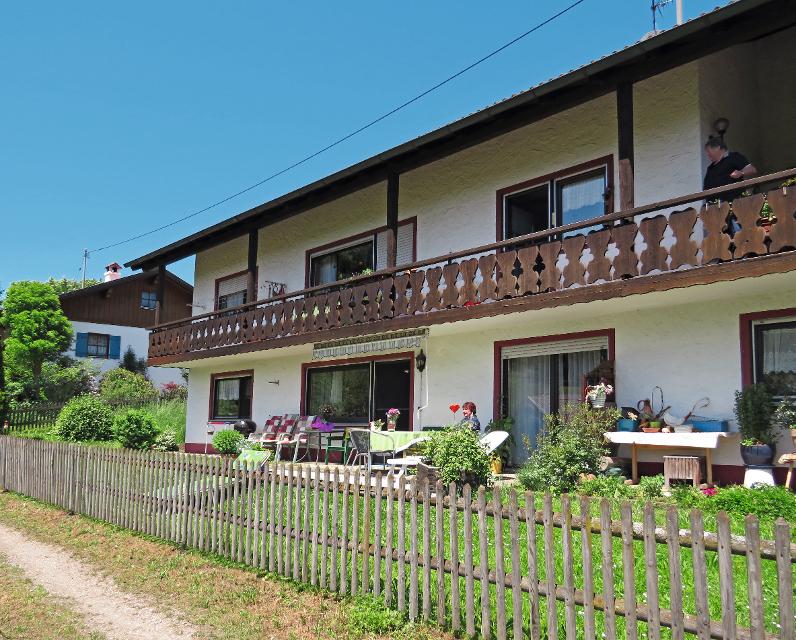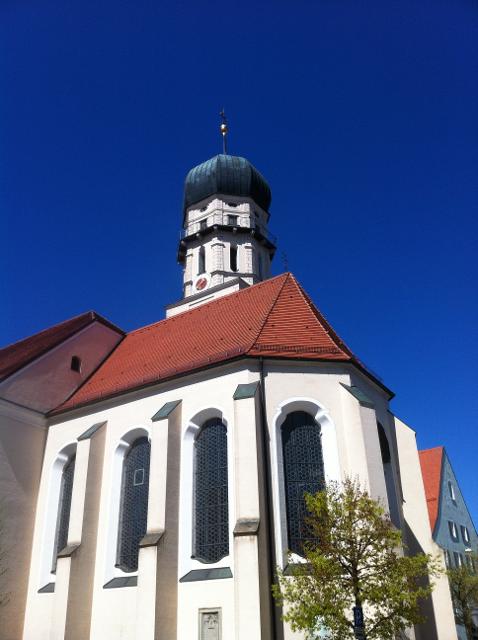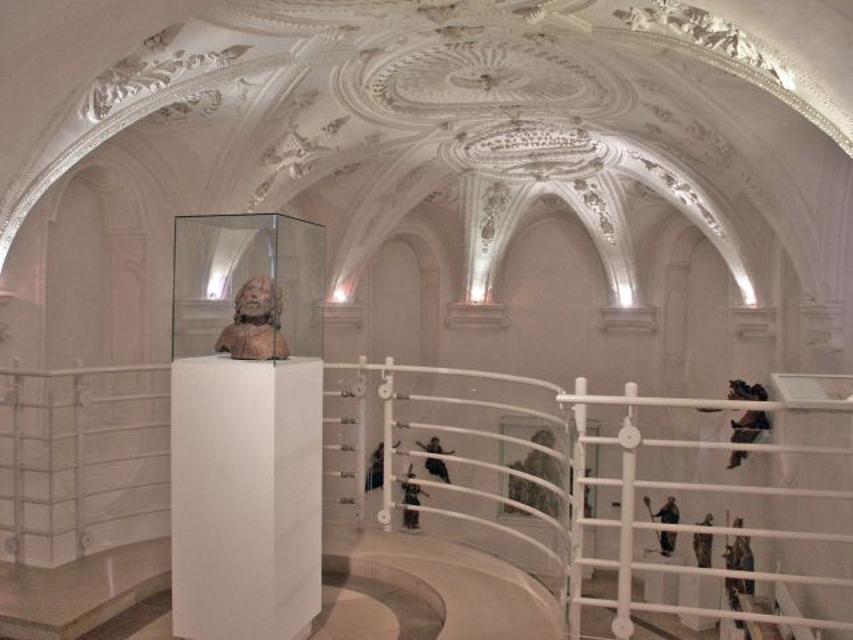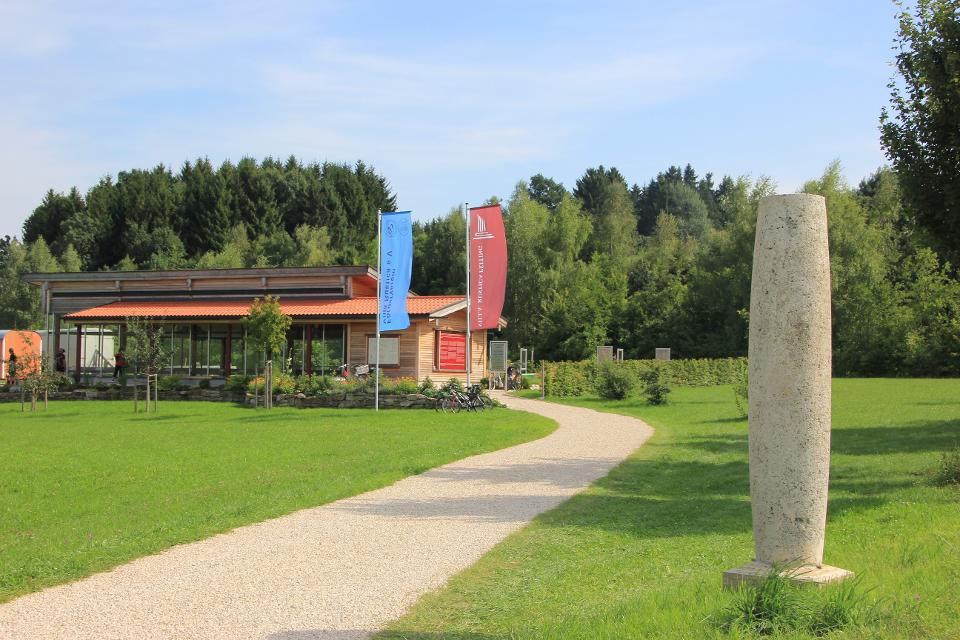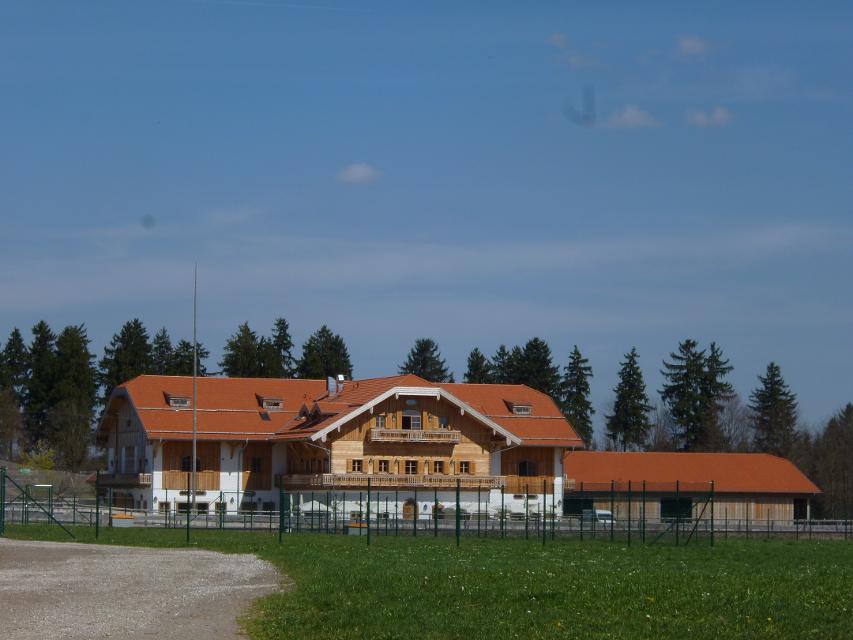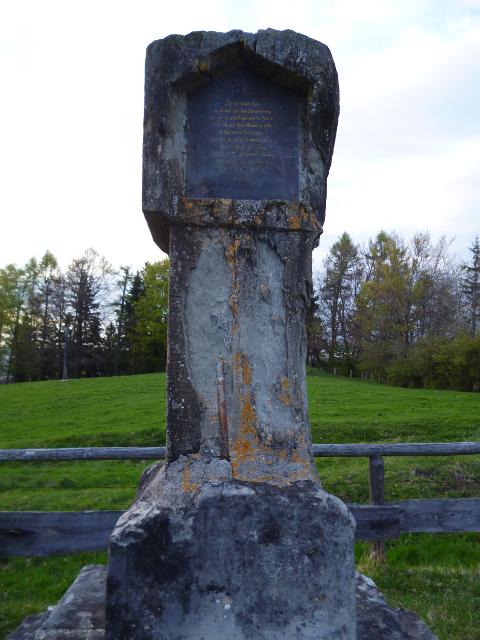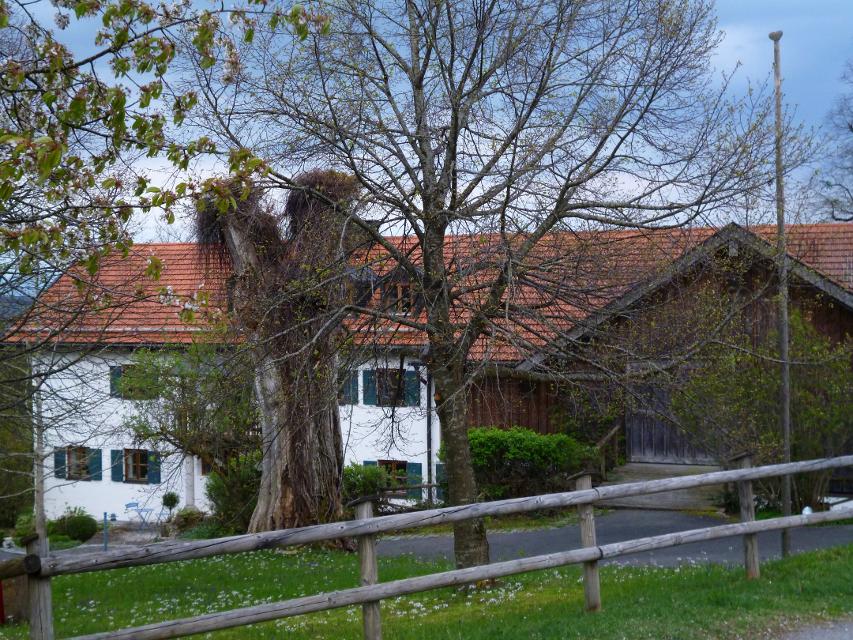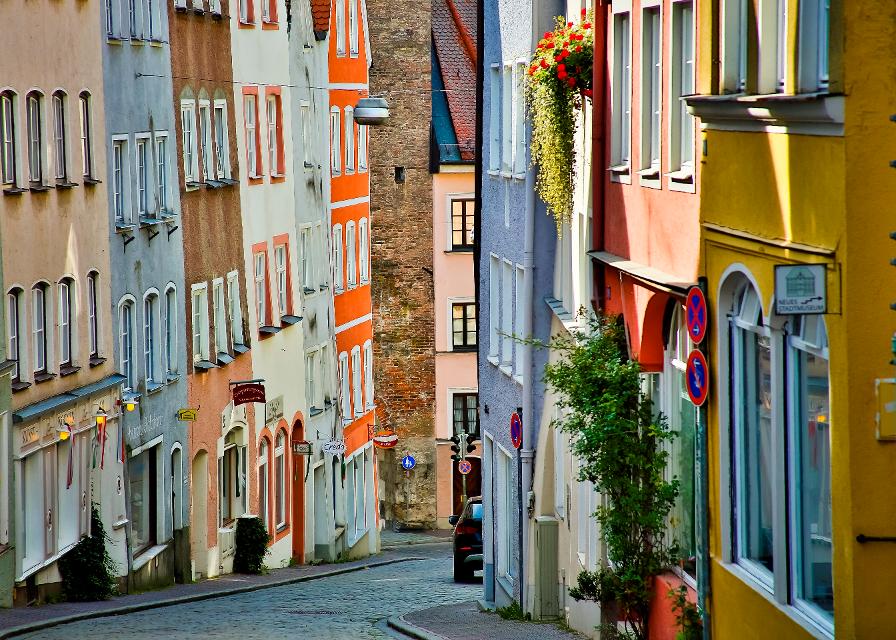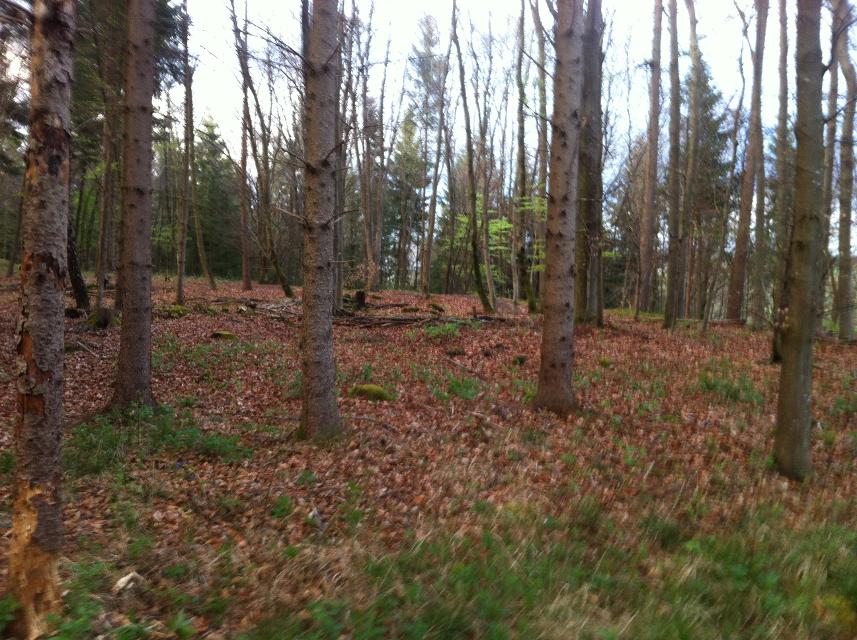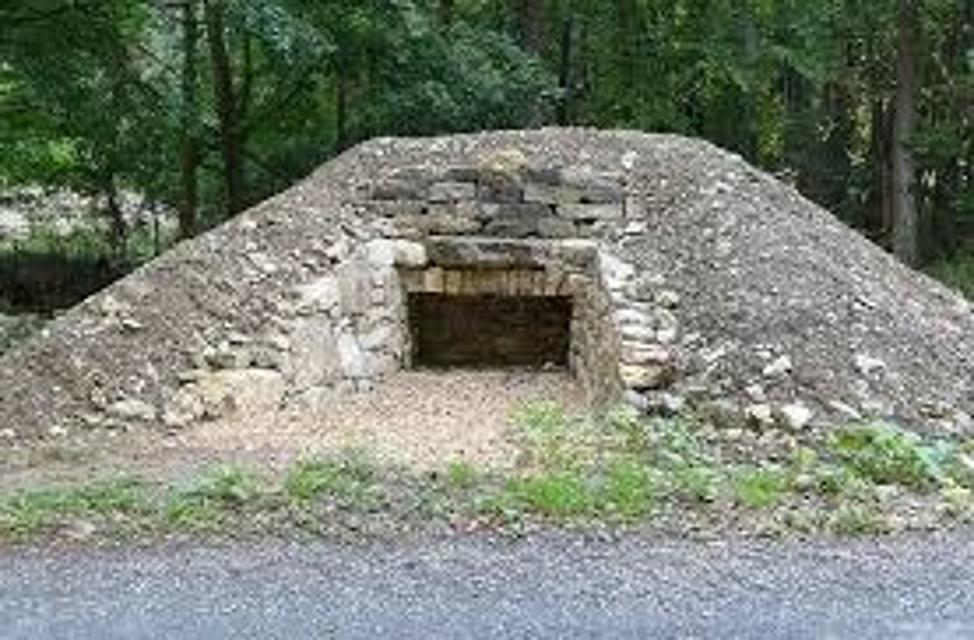Grabmahl von Johann Lechner
Stadtpfarrkirche Mariä Himmelfahrt, 86956 Schongau, Germany(710 m über NN)
Audio commentary on Station 10: Johann Lechner‘s grave
Many of my novel characters actually existed. This also includes the Schongau court clerk Johann Lechner, in front of whose tomb you are now standing. He lived in the 17th century and was one of the most important personalities in the city until his death in 1690.
In my books, Johann Lechner is something like the secret ruler, an ice-cold but very clever power politician, for whom the well-being of Schongau always comes first stands. By the way, there is a role model for “my” Lechner. This is the patrician Lord Vetinari from Terry Pratchett‘s bestselling fantasy series Discworld. I think authors are always inspired by other characters, no one writes in a vacuum. And you are welcome to guess which characters were the inspiration for Jakob and Simon. But I won‘t reveal it here...
The parish church Mariae Himmelfahrt looked different in Kuisl‘s time, it was rebuilt several times, most recently the builder of the famous Wieskirche Dominikus Zimmermann also worked on it.
In November 1667, the tower collapsed along with the five bells when there were just over a hundred Schongauers in the church. The widow Regina Reichhartin was killed by the falling debris, and it took three days and three nights to dig for the buried monstrance. The subsequent construction work, which lasted until 1674, is the subject of the volume "The Executioner‘s Daughter and the Game of Death". Like the first volume, this novel was performed in Schongau as a large open-air play.
Do you see Magdalena‘s sister Barbara sneaking past the mortar sacks and bricks into the church with her nephew Paul?
Together they overhear a conversation between Mayor Buchner and the doctor Melchior Ransmayer - the sleazy doctor who almost raped Barbara. It‘s about some conspiracy in which the mayor seems to be involved. The Kuisls are caught and Barbara almost has to pay for her curiosity with her life at the end of the novel.
There used to be a graveyard around the church. The still existing Sebastian Cemetery, once called the cemetery of God and today called the city cemetery, on the inner edge of the city wall, was established in 1526. So it dates back to the times of the plague epidemics, when the old churchyard by the town parish church was no longer sufficient.
Essen in der Nähe
"Essen in der Nähe" überspringenca. 0,1 km entfernt
Herr Lose - Unverpacktladen
geschlossen
| Wochentag | Öffnungszeiten |
|---|---|
| Montag | 09:00 - 18:00 |
| Dienstag | 09:00 - 18:00 |
| Mittwoch | 09:00 - 18:00 |
| Donnerstag | 09:00 - 18:00 |
| Freitag | 09:00 - 18:00 |
| Samstag | 09:00 - 13:30 |
| Sonntag | geschlossen |
Marienplatz 16, 86956 Schongau, Germany
Wie wäre es mit einer Tasse Kaffee, einem Espresso, Cappuccino oder Latte Macchiato? In unserem gemütlichen Café wollen wir Ihnen den besten Kaffee in der Schongauer Altstadt bieten!
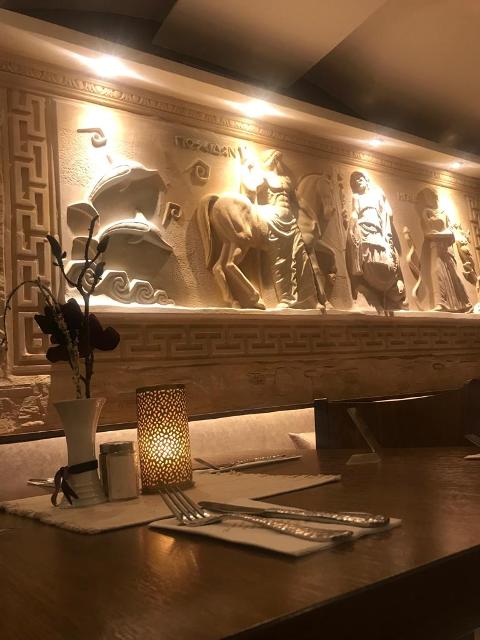
ca. 0,1 km entfernt

ca. 0,1 km entfernt
Lagerhaus
Karmeliterstr. 5, 86956 Schongau, Germany
Restaurant, mit Cafe und Bar. Seit dem Umbau kann das Lagerhasu auch mit einem Kinobesuch der besonderen Art aufwarten.
ca. 2,0 km entfernt
Schreinercafé
Friedhofweg 9, 86972 Altenstadt, Germany
Wer im Schreinercafé sitzt, genießt von der Frau des Schreinermeisters Richard Kögl täglich frisch gebackenen Kuchen , frisch gebrühten Kaffee wie er schon einst von Oma zubereitet wurde, und einen unverstellten Blick auf die romanische Basilika unweit des Cafés
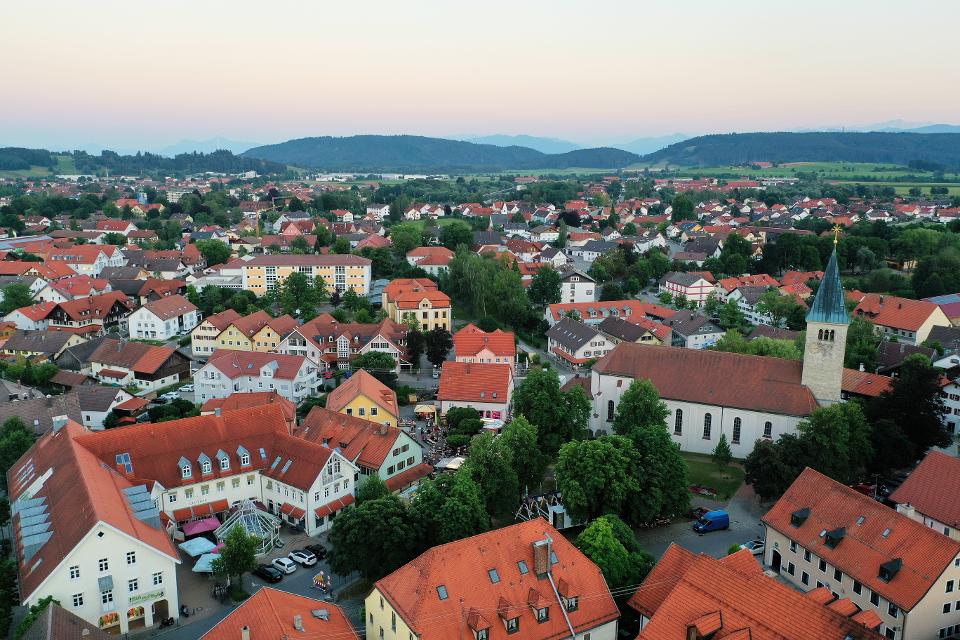
ca. 2,6 km entfernt
Central Café Bistro Bar
geschlossen
| Wochentag | Öffnungszeiten |
|---|---|
| Montag | geschlossen |
| Dienstag | 10:00 - 23:30 |
| Mittwoch | 10:00 - 23:30 |
| Donnerstag | 10:00 - 23:30 |
| Freitag | 10:00 - 23:30 |
| Samstag | 10:00 - 23:30 |
| Sonntag | 10:00 - 23:30 |
Hauptplatz 5, 86971 Peiting, Germany
Im Central Café, im Herzen von Peiting, trifft sich Jung und Alt mit Freunden und Bekannten zum Frühstücken, Essen, Kaffeetrinken mit einem hausgemachten Stück Kuchen oder abends auf einen Drink. Kleine Speisenkarte.
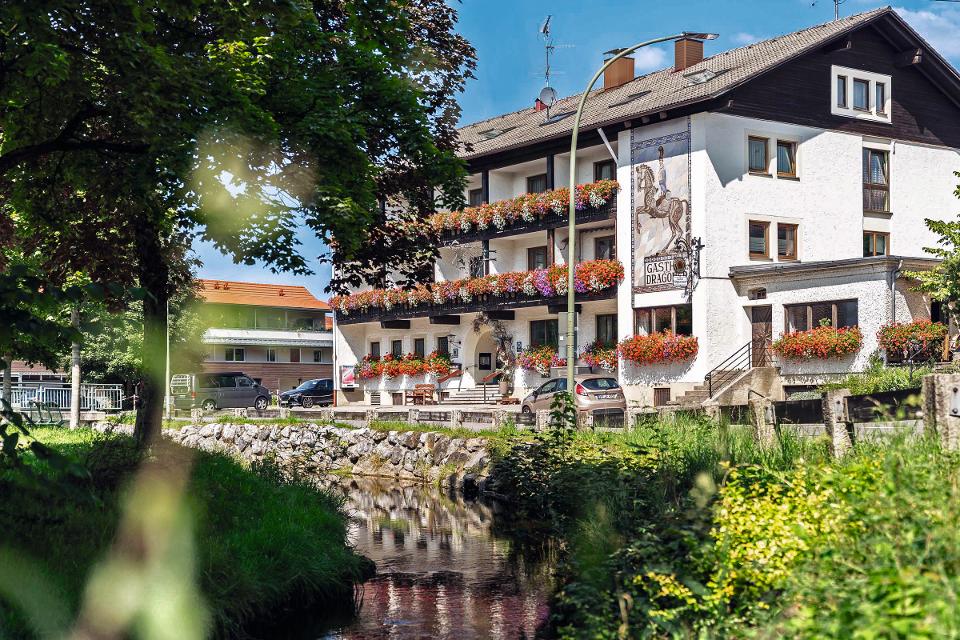
ca. 2,7 km entfernt
Hotel-Restaurant „Zum Dragoner“ OHG
Ammergauer Str. 11 + 16, 86971 Peiting, Deutschland
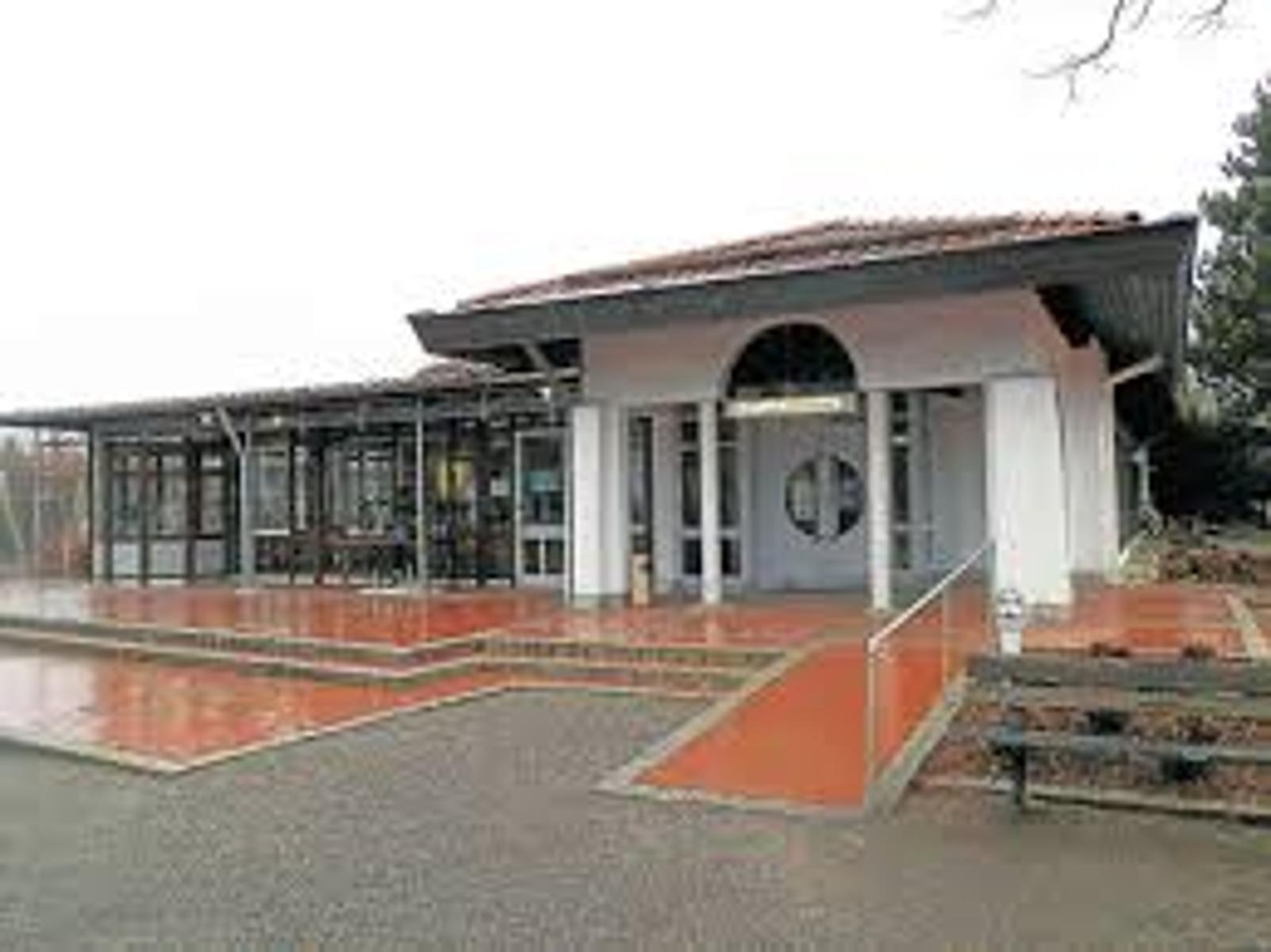
ca. 3,2 km entfernt
Herzog Cafe und Wirtshaus in Herzogsägmühle
geschlossen
| Wochentag | Öffnungszeiten |
|---|---|
| Montag | 10:00 - 16:00 |
| Dienstag | 10:00 - 16:00 |
| Mittwoch | 10:00 - 16:00 |
| Donnerstag | 10:00 - 16:00 |
| Freitag | geschlossen |
| Samstag | geschlossen |
| Sonntag | 09:00 - 17:00 |
Dorfplatz 8, 86971 Peiting-Herzogsägmühle, Germany
Das Café Herzog ist das öffentliche Café und Wirtshaus in Herzogsägmühle, mit Spielplatz, Minigolf und zwei Kegelbahnen. Unsere Speisekarte ist klein, aber fein. Wo immer möglich, verarbeiten wir regionale und nachhaltig erzeugte Produkte – selbstverständlich auch aus Herzogsägmühler Betrieben wie der Metzgerei, der Bäckerei sowie der Gärtnerei.Ebenso stellen wir viele Produkte hausgemacht her – wir haben Freude daran und hoffen, Sie mit unseren Speisen ein wenig verwöhnen zu können.Wir bieten Frühstück, Mittagessen und am Nachmittag können Sie sich auf erfrischende Eisbecher sowie hausgemachten Kuchen freuen. Unser barrierefreies Restaurant wurde mehrfach für seinen kinder- und familienfreundlichen Service ausgezeichnet.
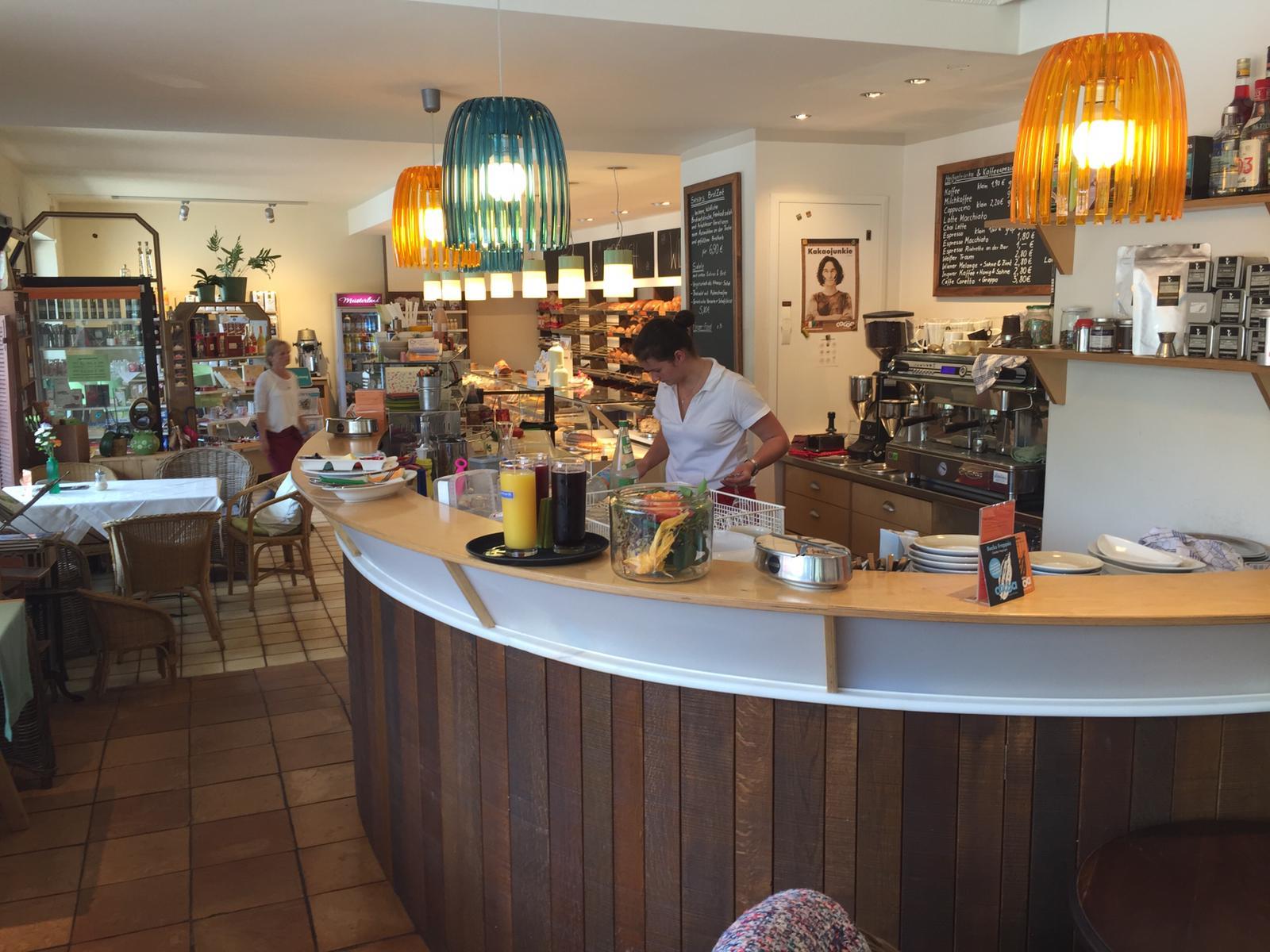
ca. 3,4 km entfernt
Bäckerei & Café Sesar
jetzt geöffnet
| Wochentag | Öffnungszeiten |
|---|---|
| Montag | 06:00 - 18:00 |
| Dienstag | 06:00 - 18:00 |
| Mittwoch | geschlossen |
| Donnerstag | 06:00 - 18:00 |
| Freitag | 06:00 - 18:00 |
| Samstag | 06:00 - 12:00 |
| Sonntag | 07:45 - 10:45 |
Bahnhofstraße 21, 86971 Peiting, Germany
Handwerklich-traditionelle Backkunst aus Peiting.
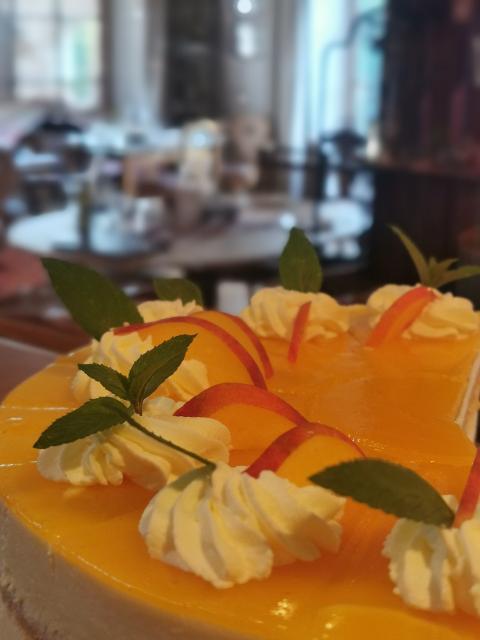
ca. 4,2 km entfernt
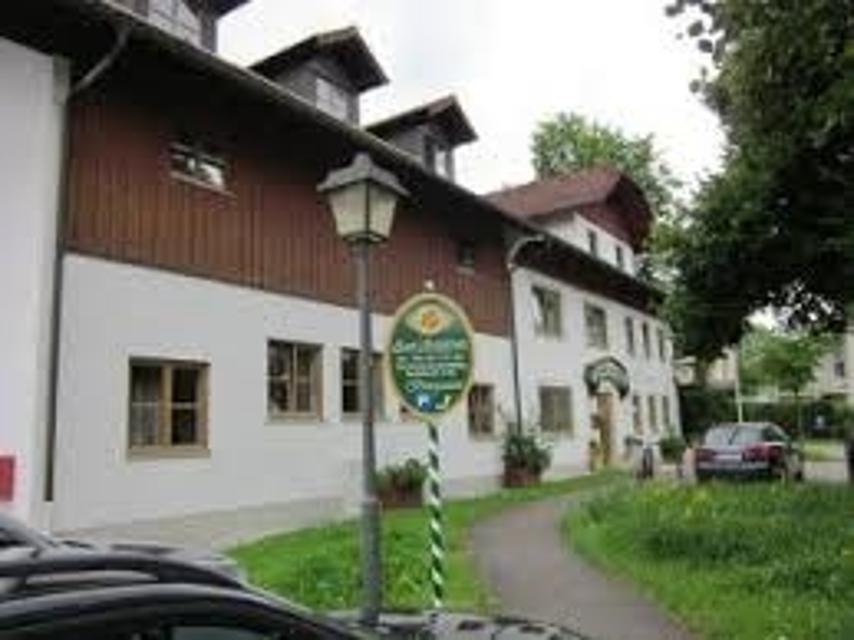
ca. 4,8 km entfernt
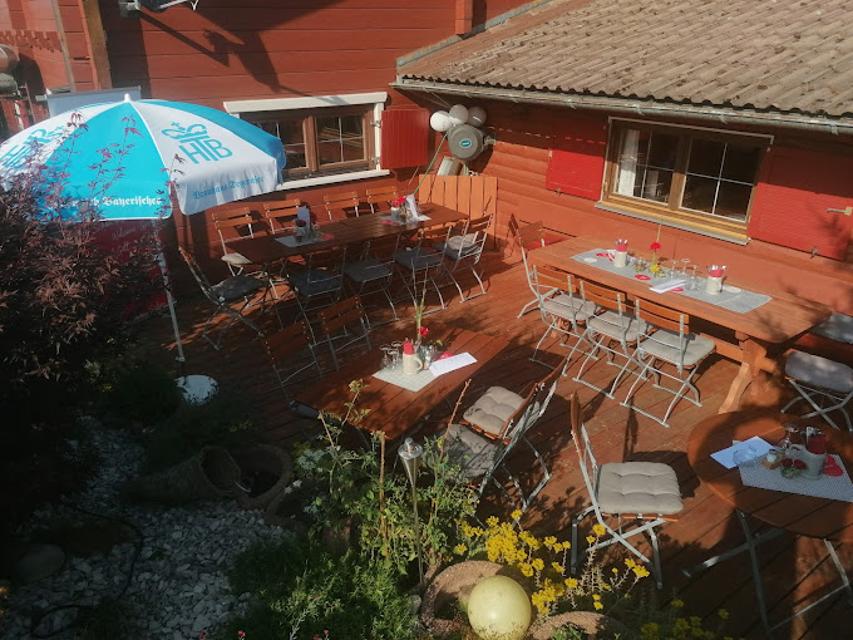
ca. 6,0 km entfernt
Olli´s Schnaidbergstuben
geschlossen
| Wochentag | Öffnungszeiten |
|---|---|
| Montag | geschlossen |
| Dienstag | geschlossen |
| Mittwoch | 17:30 - 23:00 |
| Donnerstag | 17:30 - 23:00 |
| Freitag | 17:30 - 23:00 |
| Samstag | 11:30 - 23:00 |
| Sonntag | 11:30 - 21:30 |
Ramsau 9, 86971 Peiting, Germany
Kleine Gaststätte mit Biergarten und Terrasse. Direkt am Radweg in Richtung Rottenbuch gelegen. Abwechslungsreiche und kreative kleine Speisekarte.
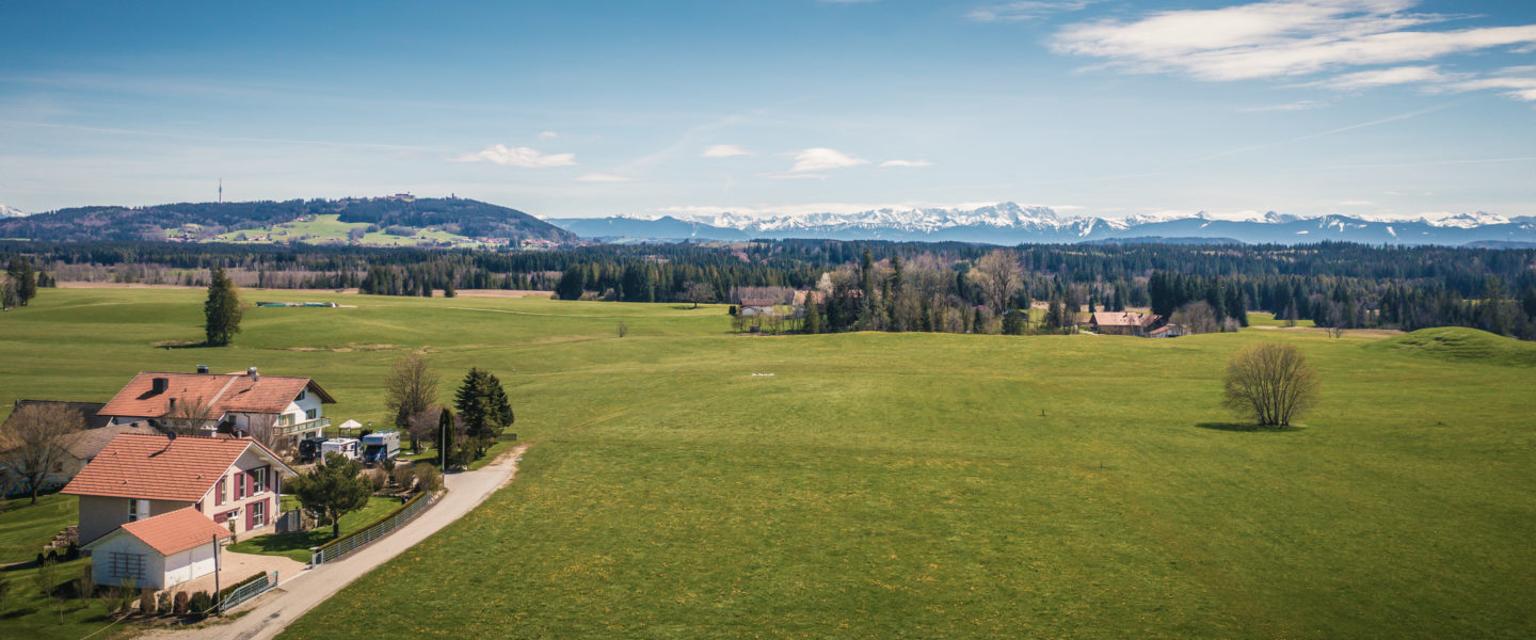
ca. 7,3 km entfernt
Restaurant Zauberhütte
geschlossen
| Wochentag | Öffnungszeiten |
|---|---|
| Montag | geschlossen |
| Dienstag | geschlossen |
| Mittwoch | geschlossen |
| Donnerstag | 17:00 - 22:00 |
| Freitag | 17:00 - 22:00 |
| Samstag | 11:30 - 22:00 |
| Sonntag | 11:30 - 22:00 |
Mößle 2, 86971 Peiting, Germany
Idyllisch und ruhig gelegen inmitten von Wiesen mit traumhaften Ausblick auf das Alpenpanorama.
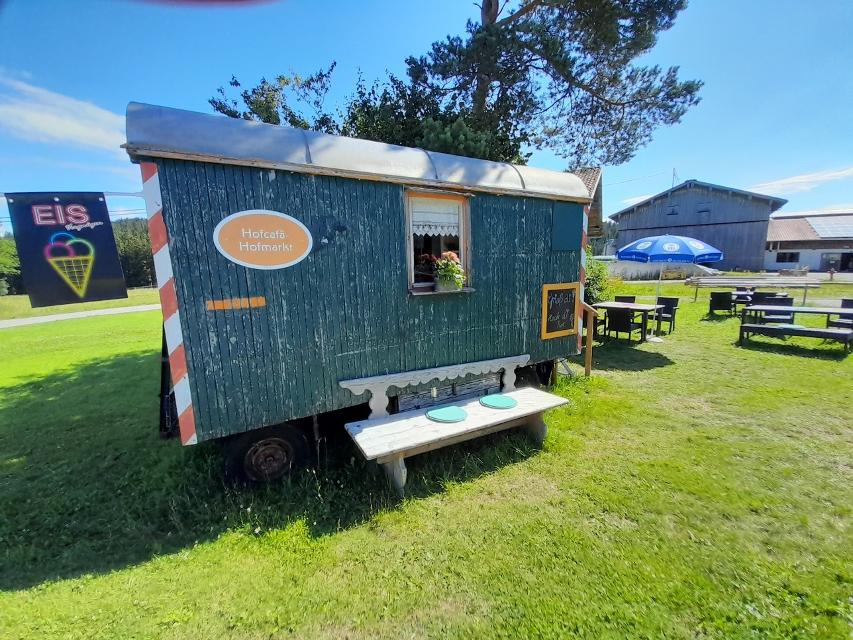
ca. 7,9 km entfernt
Hofcafä Burggen
geschlossen
| Wochentag | Öffnungszeiten |
|---|---|
| Montag | 07:00 - 20:00 |
| Dienstag | 07:00 - 20:00 |
| Mittwoch | 07:00 - 20:00 |
| Donnerstag | 07:00 - 20:00 |
| Freitag | 07:00 - 20:00 |
| Samstag | 07:00 - 20:00 |
| Sonntag | 07:00 - 20:00 |
Ziegler 2, 86977 Burggen, Germany
Das ist ja cool! Das ist meist die erste Reaktion von Radlern und Wanderern, die „zufällig“ amHofcafä vorbeikommen. Da steht ein Bauwagen mit herrlich einladenden Tischen und Sonnenschirmenam Hof. Und im Bauwagen? Selbstbedienung. Und zwar nur vom Feinsten!
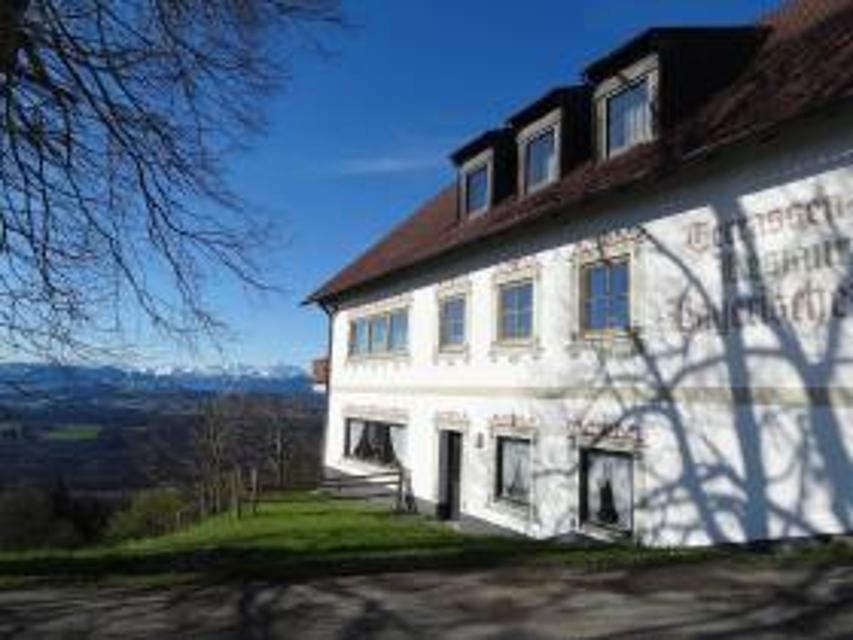
ca. 8,8 km entfernt
Gaststätte Bayerischer Rigi
M. Günther-Pl. 2, 82383 Hohenpeißenberg, Germany
Schweinshaxe, Jägerbraten und Staffelseezander im zünftigen Wirtshaus mit Panoramaterrasse auf 1000 m Höhe.
Unterkünfte in der Nähe
"Unterkünfte in der Nähe" überspringen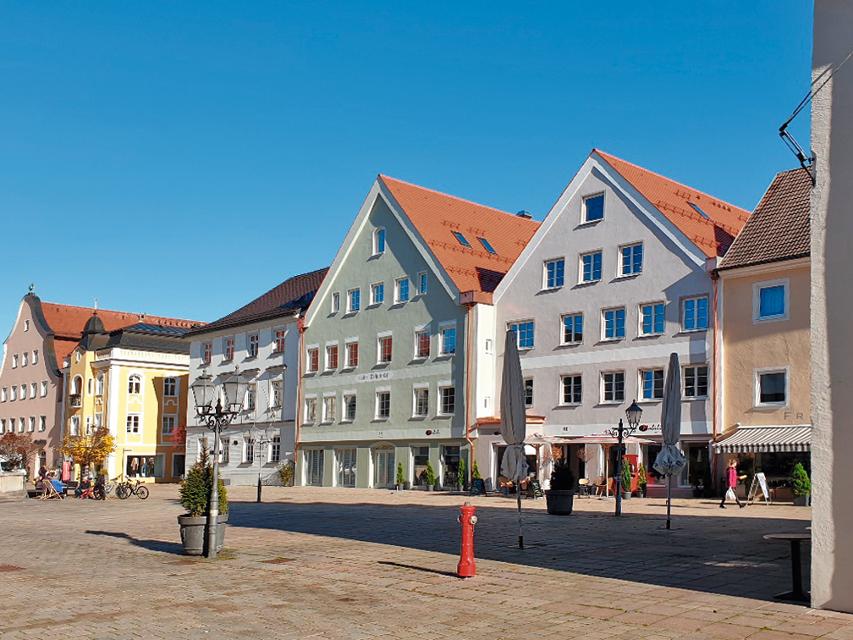
ca. 0,1 km entfernt
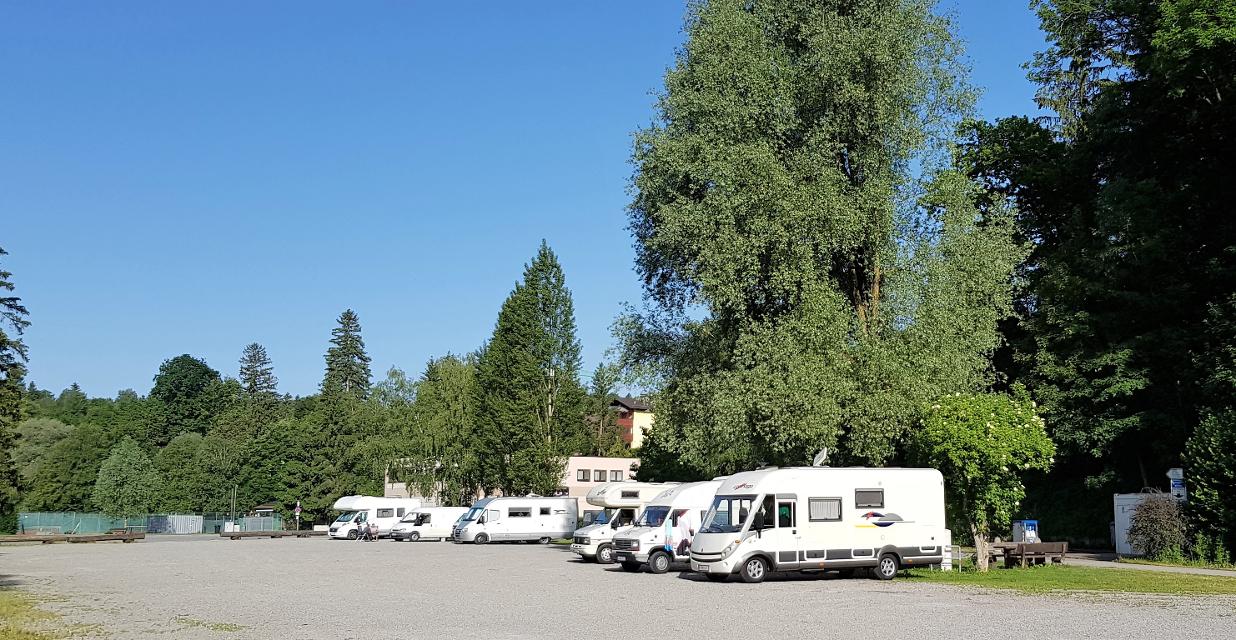
ca. 0,4 km entfernt
Wohnmobilstellplatz Schongau
Lechuferstraße, 86956 Schongau, Germany
Der Wohnmobilstellplatz befiindet sich in unmitelbarer Nähe des beliebten Erlebnisbades Plantsch an der Lechuferstraße. Dieser bietet 70 sonnige sowie teilweise schattige Plätze. Von dort aus ist über einenFußweg die Historische Altstadt in wenigen Minuten zu erreichen. Dort bietet sich eine attraktive Auswahl an Gastronomie, Geschäften, Fußgängerzone sowie auch historisch bedeutsame Punkte zur Besichtigung. Ein gleichfalls attraktives Ausflugsziel vom Wohnmobilstellplatz aus ist der Badestrand mit seinem gastronomisch bewirtschafteten Bootshaus am Schongauer Stausee "Lido"

ca. 2,7 km entfernt
Hotel-Restaurant „Zum Dragoner“ OHG
Ammergauer Str. 11 + 16, 86971 Peiting, Deutschland
Weitere Tipps in der Nähe
"Weitere Tipps in der Nähe" überspringen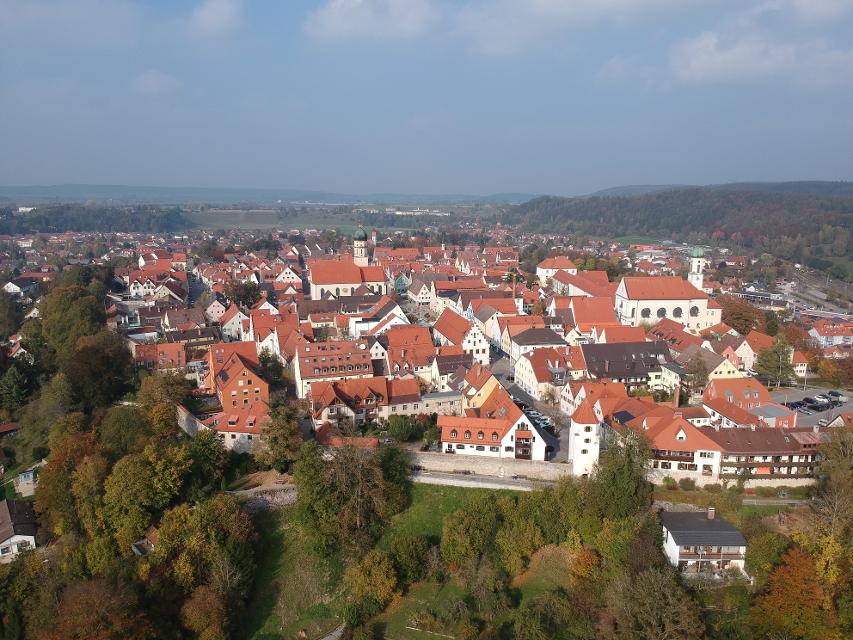
Empfehlung
Oliver Pötzsch guides you through the old town of Schongau
Experience an eventful and exciting tour through the historic old town of Schongau with audio commentary by bestselling author Oliver Pötzsch! To be able to use the audio files with the app, please activate the audio function on the map in the app.
1:15 h 11 hm 11 hm 2,0 km sehr leicht
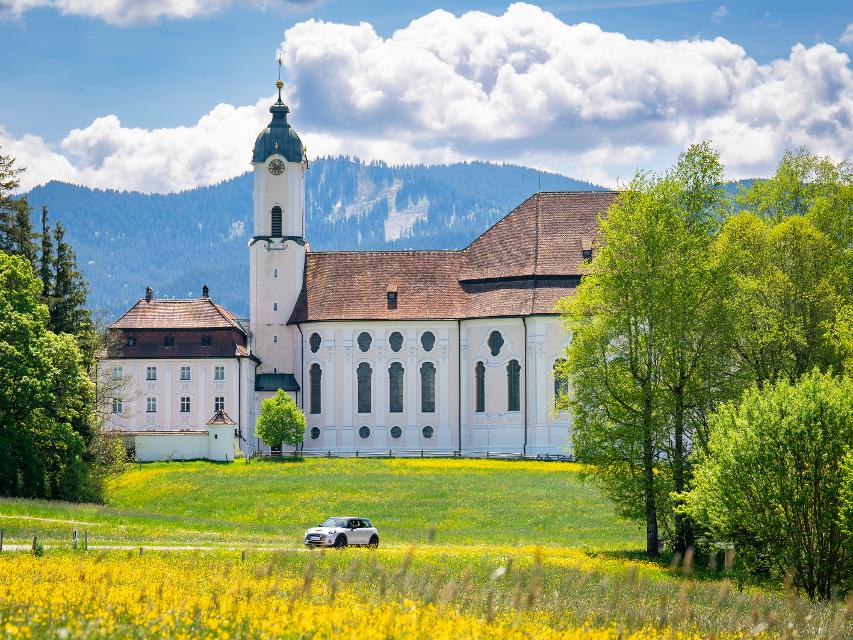
ca. 0,0 km entfernt
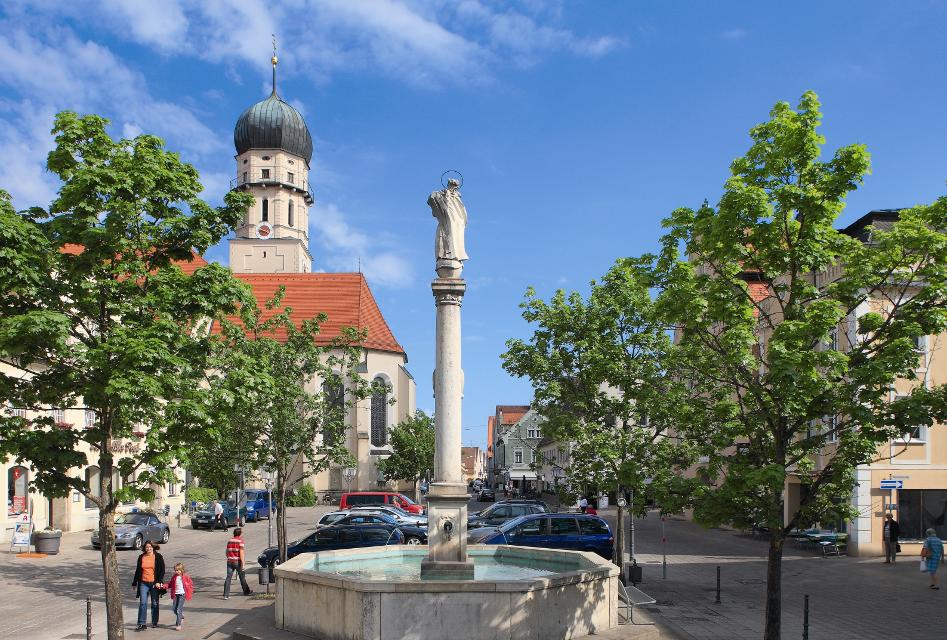
ca. 0,1 km entfernt
Brunnen am Marienplatz
Marienplatz, 86956 Schongau, Germany
The center of the historic old town is Marienplatz with Marienbrunnen and the mighty Ballenhaus. Life in the old town was concentrated around this square, as it is today. Important buildings such as the town hall or the church are in the immediate vicinity. Audio commentary on station 1, fountain at Marienplatz
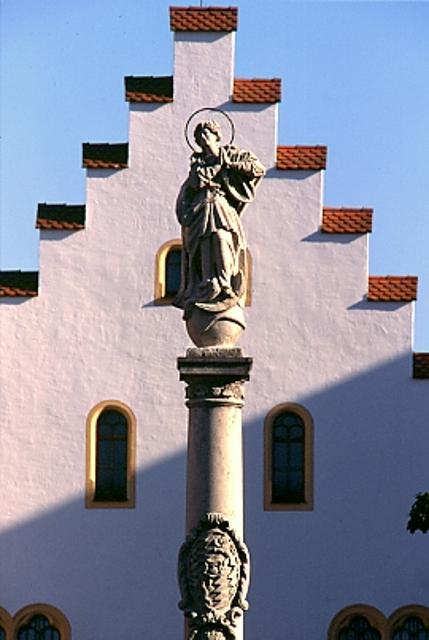
ca. 0,1 km entfernt
Schongau - die mittelalterliche Stauferstadt
Marienplatz, 86956 Schongau, Germany
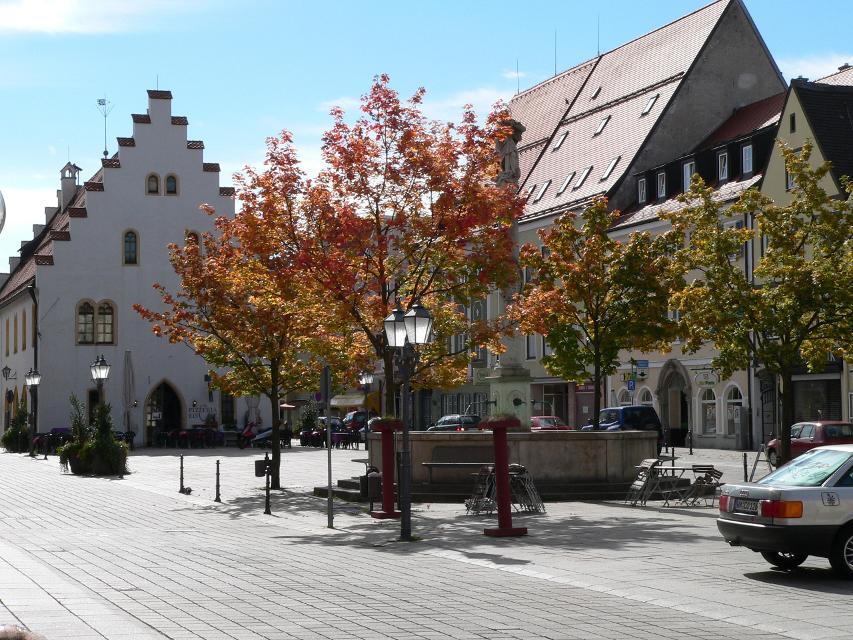
ca. 0,1 km entfernt
Marienplatz, ehemaliger Marktplatz
Marienplatz, 86956 Schongau, Germany
Audiokommentar zur Station 2 - Der Marktplatz

ca. 0,1 km entfernt
Historisches Ballenhaus
Marienplatz, 86956 Schongau, Germany
The Ballenhaus is the only free-standing building on Marienplatz. In the Middle Ages it served as a warehouse and transhipment house. Here the carters had to store their goods packed in bales and declare them. The naming of the building still bears witness to this today. The first floor of the Ballenhaus is also the city‘s old council chamber. Audio commentary on Station 2, Ballenhaus
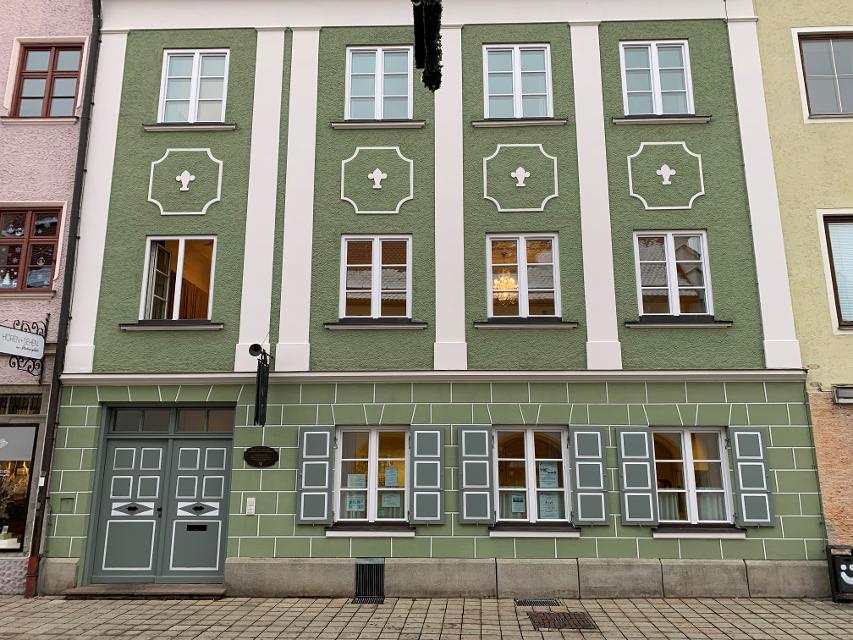
ca. 0,1 km entfernt
Semerwirt, heute Musikschule
Marienplatz, 86956 Schongau, Germany
In the 16th century, merchants who stored their goods in the nearby Ballenhaus stayed at the "Zum Stern" inn. In the current music school, bourgeois palace from the Baroque period; rich stucco work by Franz Schmuzer on the first and second floors; 1902 to 1926 town hall, oldest mention 1580 as inn "Zum Stern". Audio commentary on station 3, Semerwirt, today music school
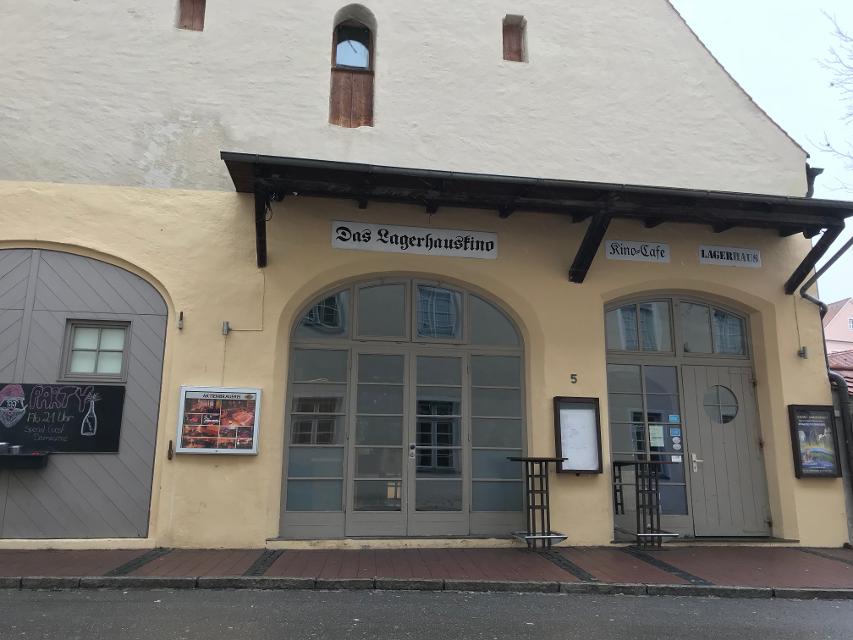
ca. 0,1 km entfernt
Lagerhauskino, Schongau
Karmeliterstraße 5, 86956 Schongau, Germany
Das kleine, etablierte Programmkino mit Holzbalkendecke zeigt Independent-Produktionen und Dokumentarfilme.
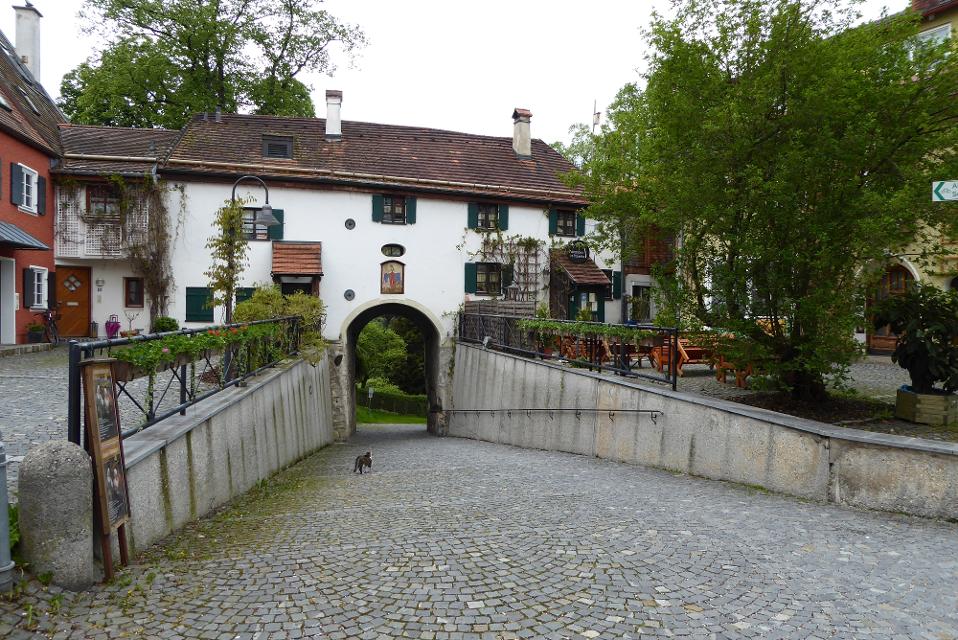
ca. 0,1 km entfernt
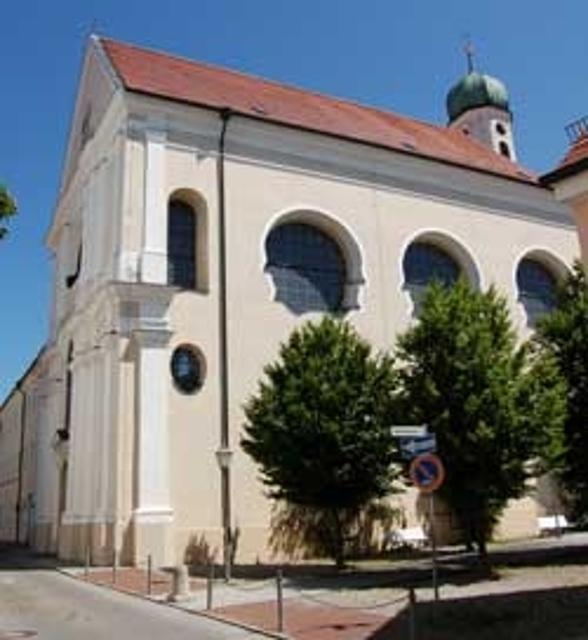
ca. 0,1 km entfernt
Ehemaliges Kloster der unbeschuhten Karmeliten
Karmeliterstraße, 86956 Schongau, Germany
Audiokommentar zur Station 7 - Das Kloster
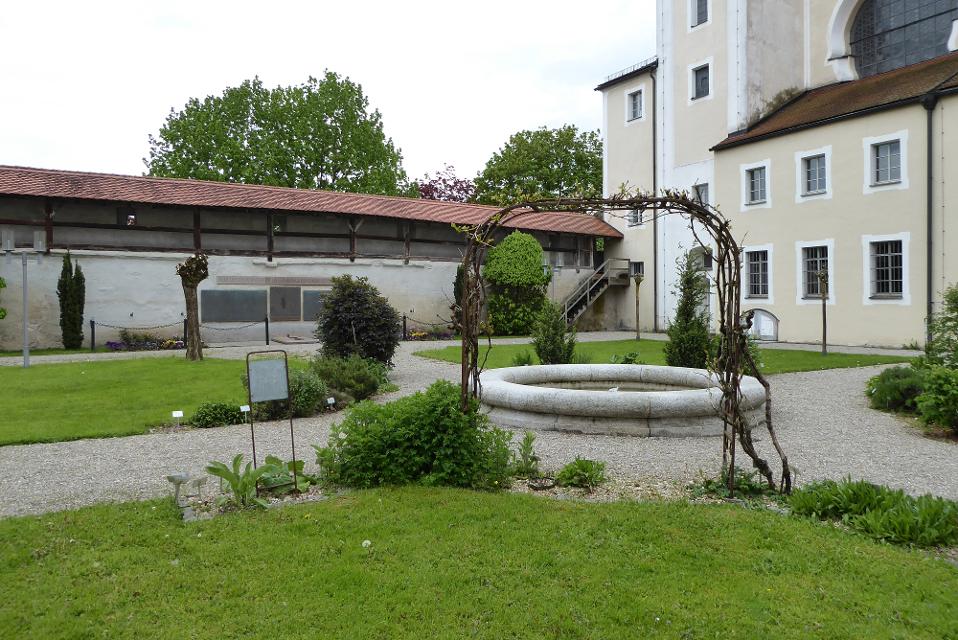
ca. 0,2 km entfernt
Klostergarten
Karmeliterstraße, 86956 Schongau, Germany
The monastery courtyard of the Heilig-Geist-Spital is located right next to the Heilig-Geist-Spitalkirche St. Anna on the east side of the historic city wall of Schongau. Like the church, it goes back to the work of the Carmelite monks who settled in Schongau at the beginning of the 18th century. Today, various medicinal herbs are grown in the monastery courtyard. Audio commentary on station 9, monastery garden
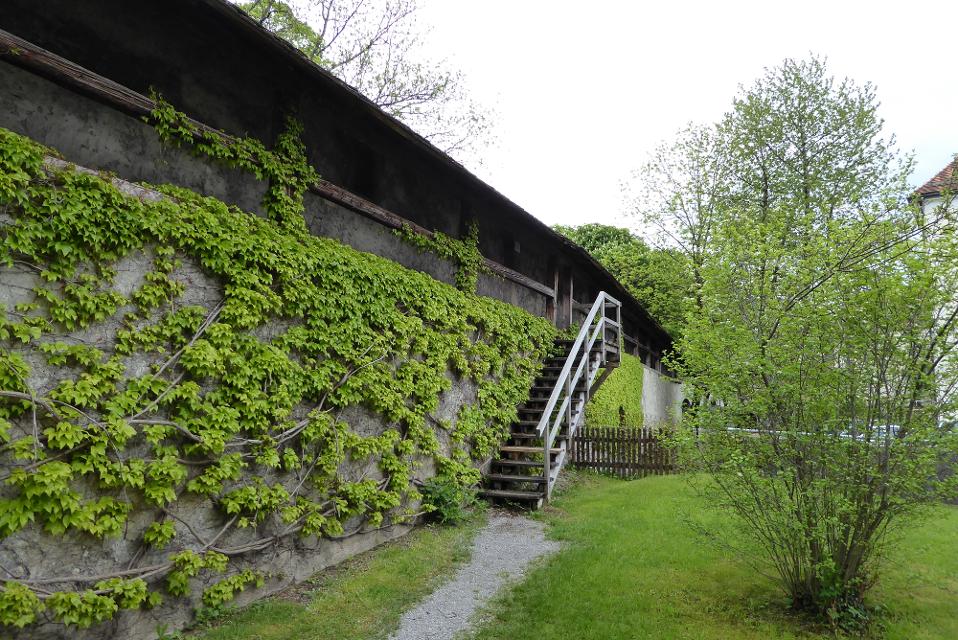
ca. 0,2 km entfernt
Wehrgang auf der historischen Stadtmauer
Karmeliterstraße, 86956 Schongau, Germany
Audiokommentar zur Station 8 - Der Wehrgang
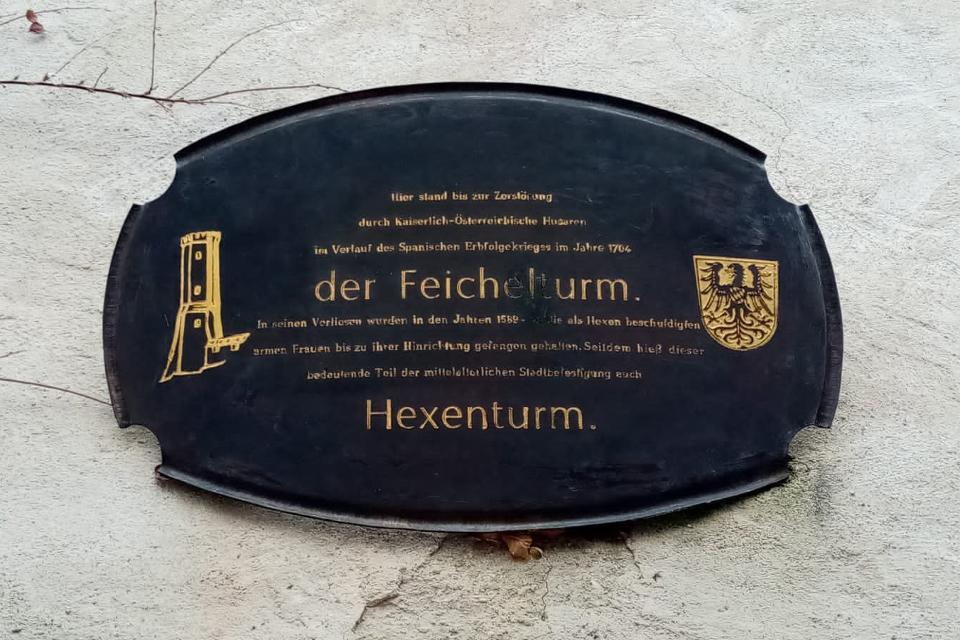
ca. 0,2 km entfernt
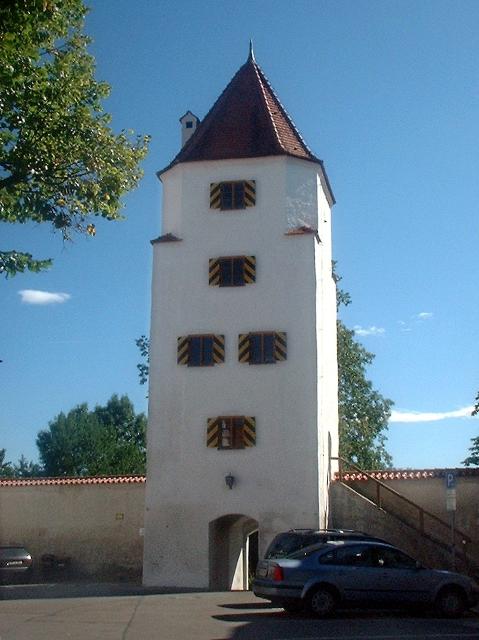
ca. 0,2 km entfernt
Polizeidienerturm
Lindenplatz, 86956 Schongau, Germany
Audiokommentar zur Station 5 - Der Polizeidienerturm
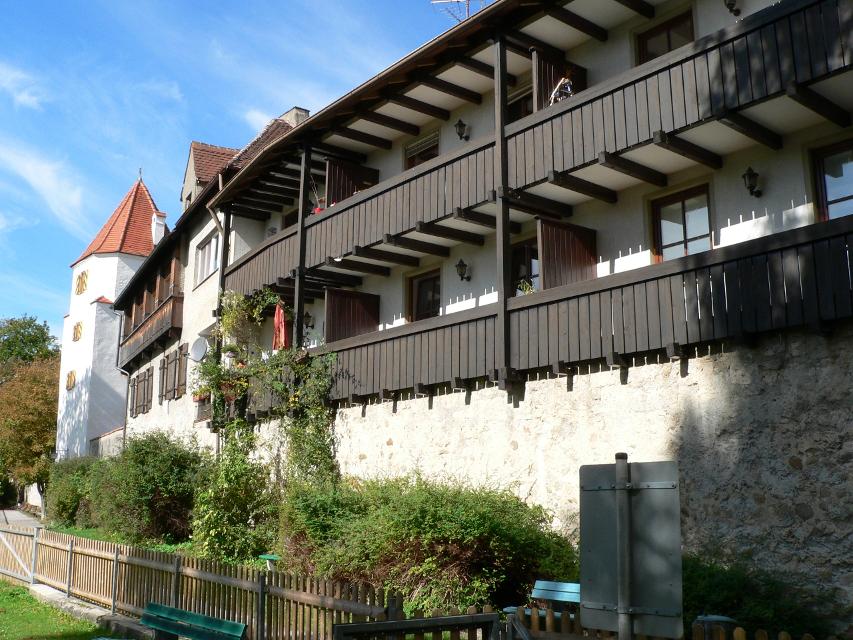
ca. 0,3 km entfernt
Historische Stadtmauer
Bürgermeister-Schägger-Platz, 86956 Schongau, Germany
Audiokommentar zur Station 6 - Die Stadtmauer
Das könnte Dir auch gefallen
"Das könnte Dir auch gefallen" überspringen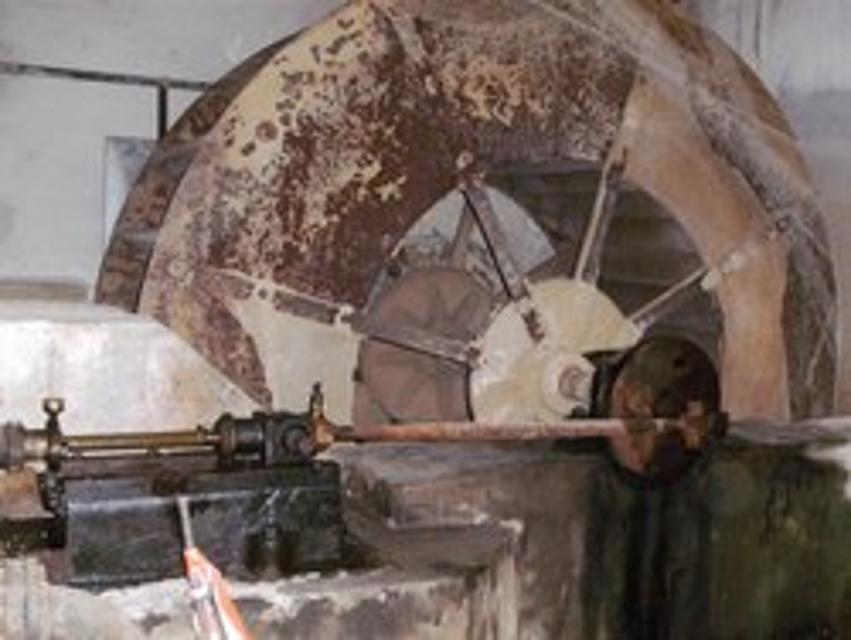
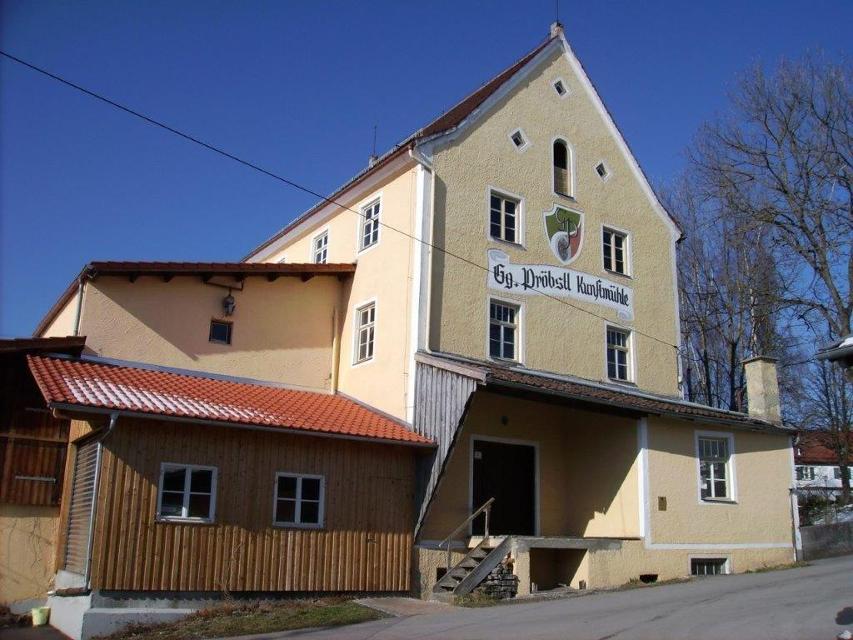



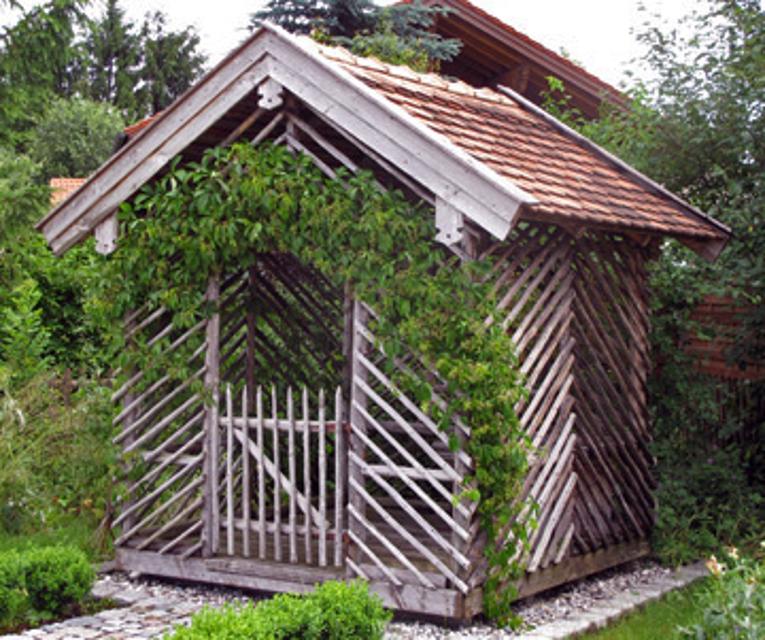
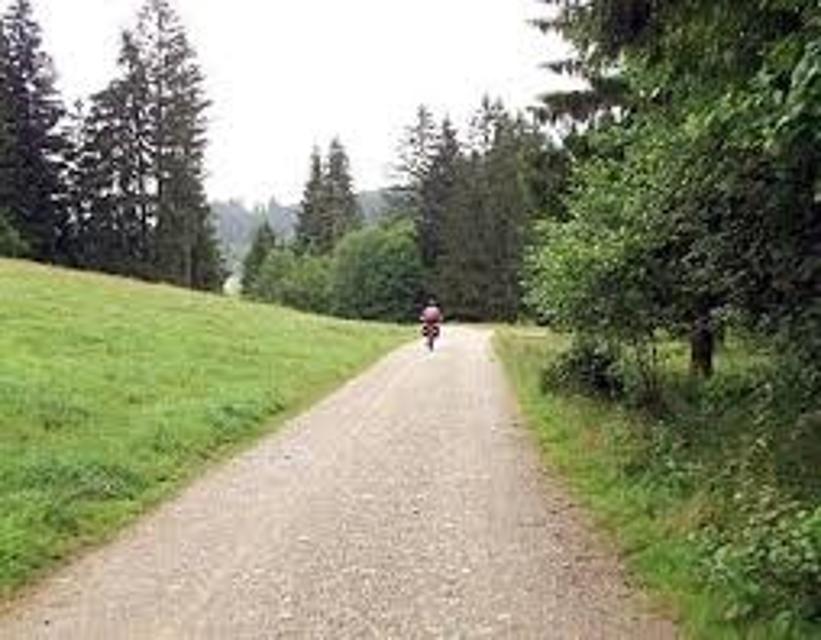

Historische Stadtmauer
Bürgermeister-Schägger-Platz, 86956 Schongau, Germany
Audiokommentar zur Station 6 - Die Stadtmauer

Historisches Ballenhaus
Marienplatz, 86956 Schongau, Germany
The Ballenhaus is the only free-standing building on Marienplatz. In the Middle Ages it served as a warehouse and transhipment house. Here the carters had to store their goods packed in bales and declare them. The naming of the building still bears witness to this today. The first floor of the Ballenhaus is also the city‘s old council chamber. Audio commentary on Station 2, Ballenhaus
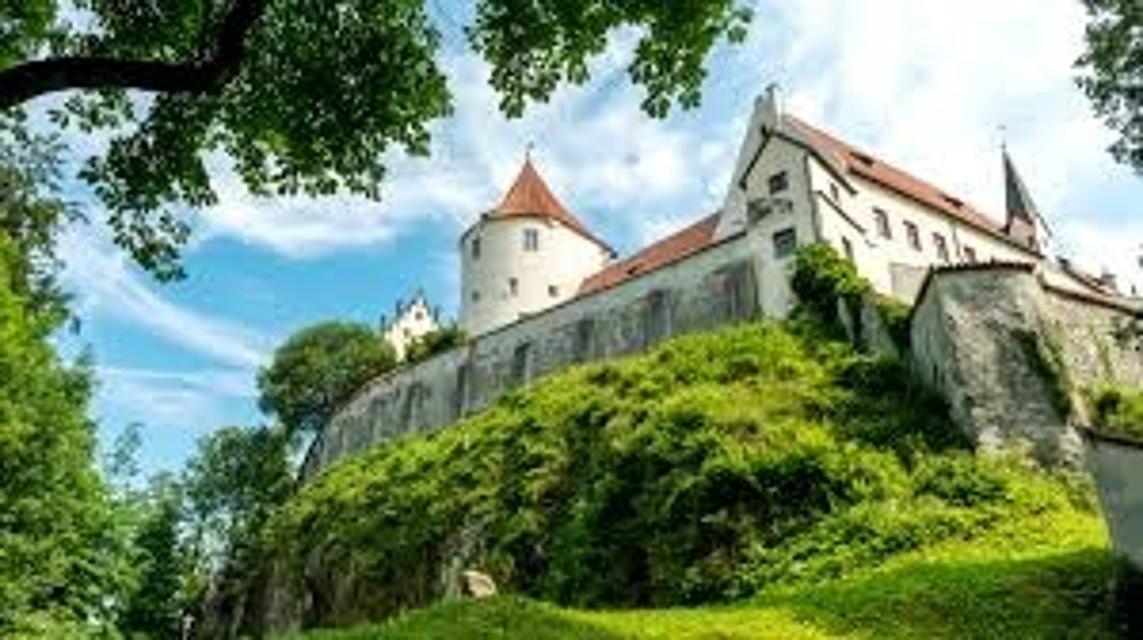
Hohes Schloss Füssen
Magnusplatz, 10, 87629 Füssen, Germany
Hoch über der Stadt Füssen thront das Hohe Schloss. Einst war es die Sommerresidenz der Fürstbischöfe von Augsburg. Heute beherbergt es die Filialgalerie der Bayerischen Staatsgemäldesammlungen und die Städtische Galerie. Das Hohe Schloss in Füssen zählt zu den bedeutendsten Profanbauten der deutschen Spätgotik und ist nicht nur in seinem Inneren eine Sehenswürdigkeit: Im Hof sind einzigartige Illusionsmalereien zu entdecken.
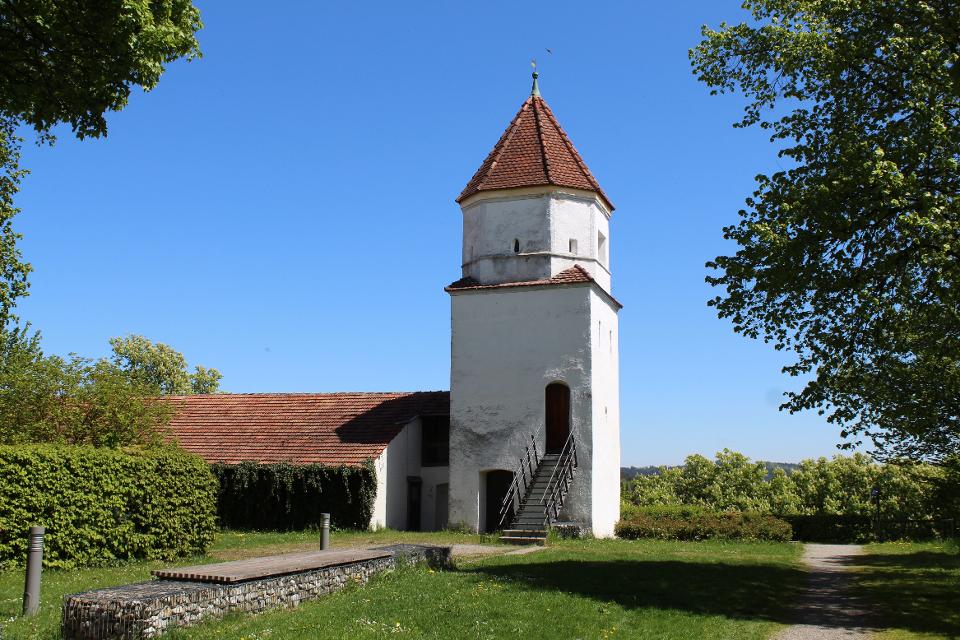
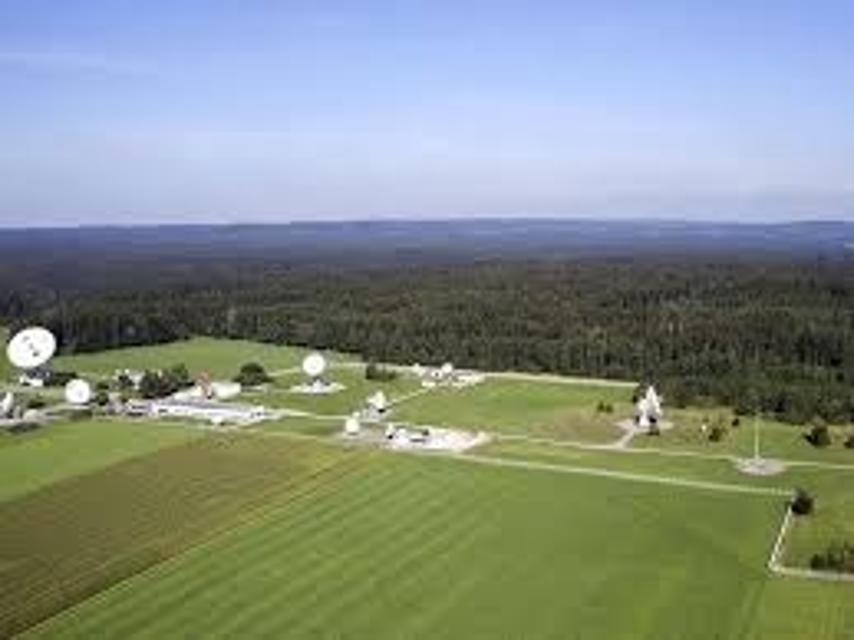

Marienplatz, ehemaliger Marktplatz
Marienplatz, 86956 Schongau, Germany
Audiokommentar zur Station 2 - Der Marktplatz
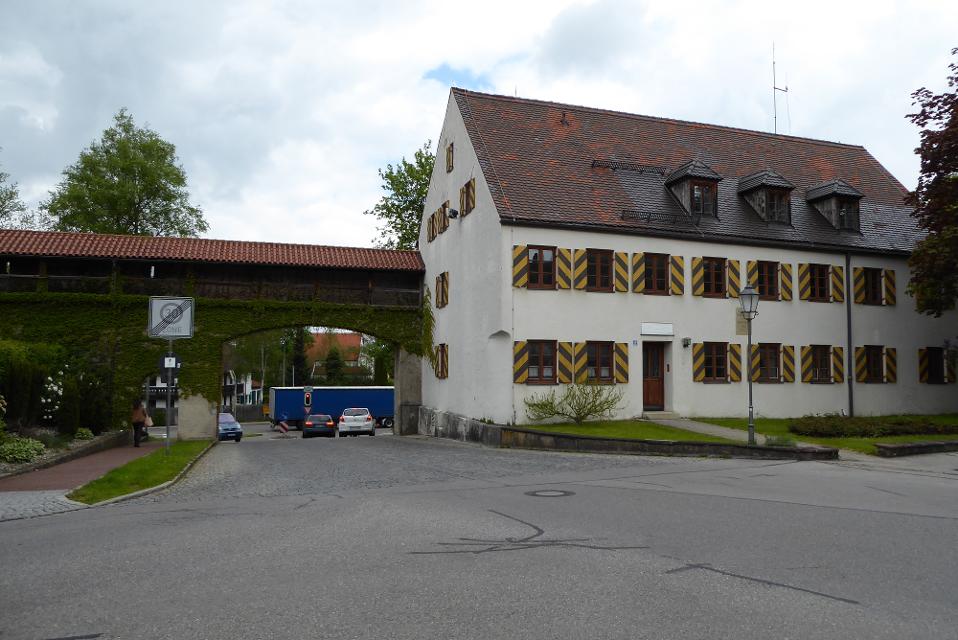

Polizeidienerturm
Lindenplatz, 86956 Schongau, Germany
Audiokommentar zur Station 5 - Der Polizeidienerturm
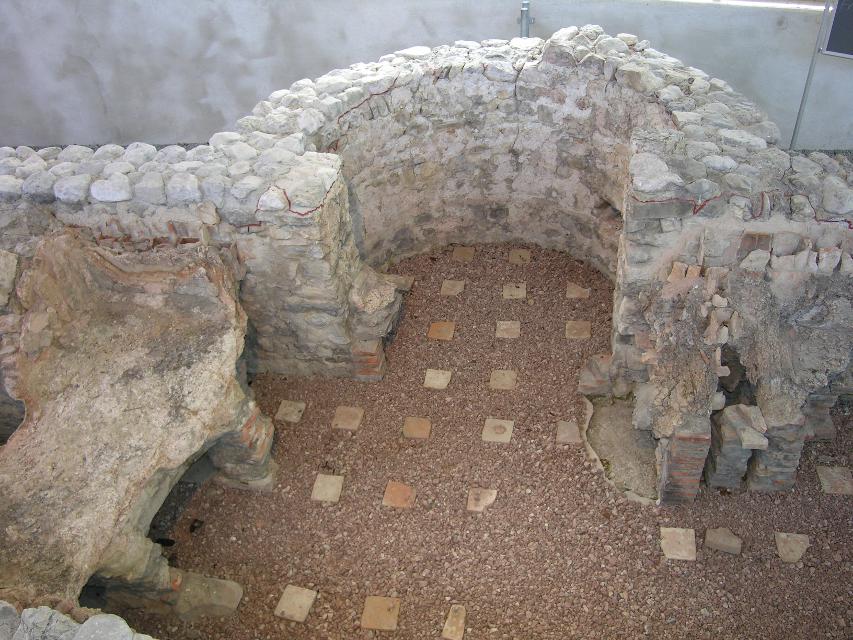
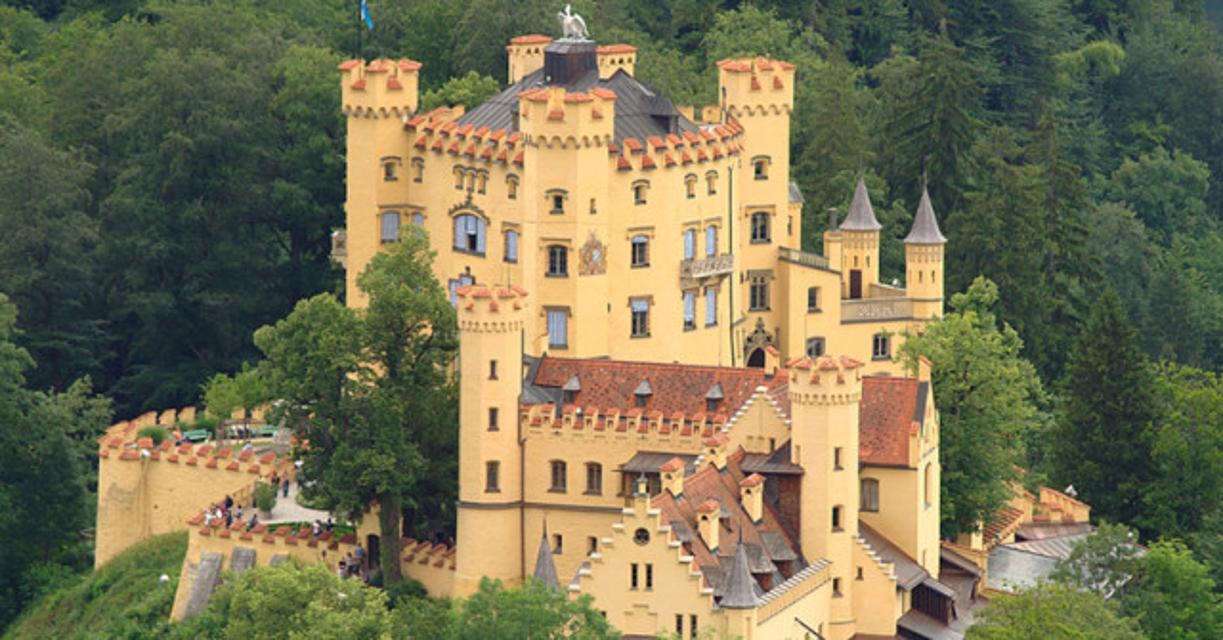
Schloss Hohenschwangau
Alpseestraße, 30, 87645 Schwangau, Germany
Die "Kinderstube" des jungen Ludwig ll.

Schongau - die mittelalterliche Stauferstadt
Marienplatz, 86956 Schongau, Germany

Semerwirt, heute Musikschule
Marienplatz, 86956 Schongau, Germany
In the 16th century, merchants who stored their goods in the nearby Ballenhaus stayed at the "Zum Stern" inn. In the current music school, bourgeois palace from the Baroque period; rich stucco work by Franz Schmuzer on the first and second floors; 1902 to 1926 town hall, oldest mention 1580 as inn "Zum Stern". Audio commentary on station 3, Semerwirt, today music school
Strahdrischn und Sichtachse Bild "Verzauberte Mühle"
Germany
Heuhocken ganz nach alter Tradition, so wie sie einst vor über 100 Jahren Franz Marc malte, sind in Sindelsdorf auf einer Streuwiese an der südlichen Ortsausfahrt zu sehen. Sie bilden eine der 15 Stationen des Maler-Rundwegs, der zu jenen Plätzen führt, an denen der Künstler lebte und seine Werke schuf.
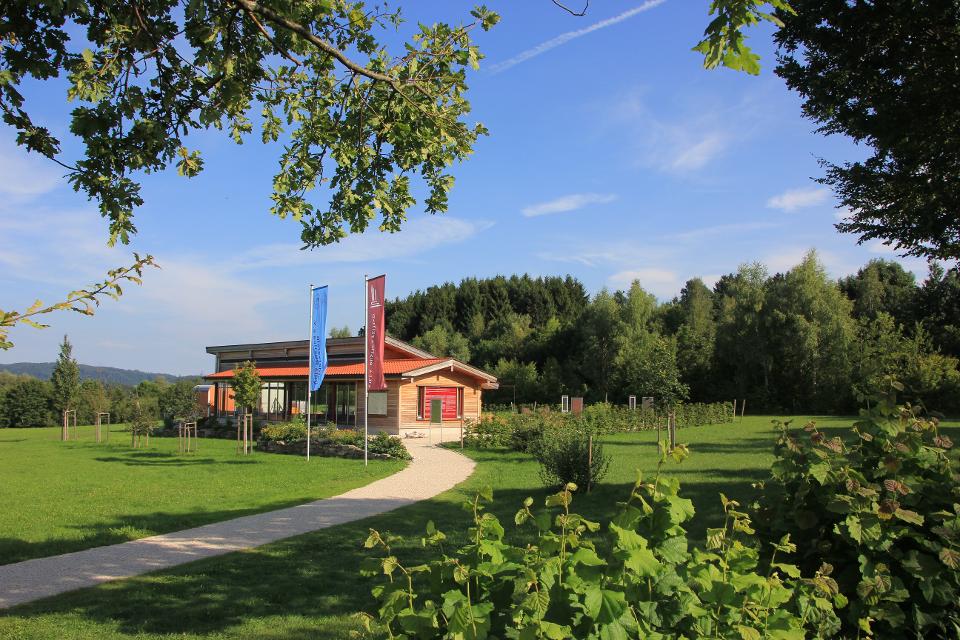
Villa Rustica
Kreuter Weg, 86971 Peiting, Germany
Römische Bade- und Gartenkultur an einem Ort erlebbar
